If I had to find a single word to describe how my day trip to Tskaltubo turned out to be, I would have to go with bittersweet. In essence, that single word can tell you how my entire second trip to Georgia felt for the most part. There are many reasons for it feeling that way, some of which I will uncover throughout this unusually long article of mine. Tskaltubo, just a few kilometers away from Kutaisi, used to be a Soviet-era resort town and yet today it is but a ghost town. If Georgian authorities succeed in their plans, it will be a global center for health tourism some time in the future, when it will look nothing like it does today. Read on to find out why you too should visit Tskaltubo, and why you may not have enough time to do so…
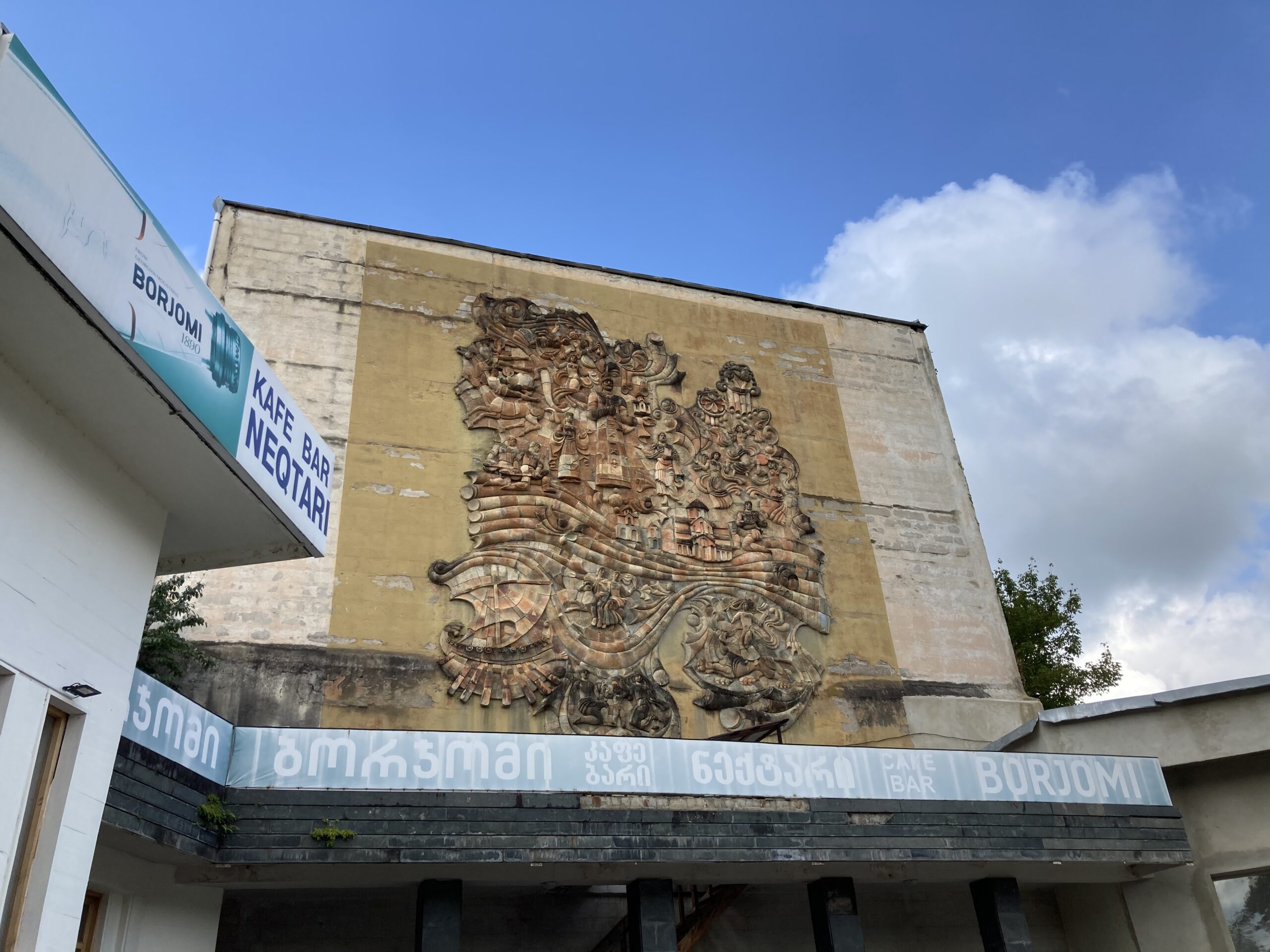
You can actually get to Tskaltubo quite easily. Kutaisi is home to an international airport with quite frequent (and often cheap) connections to Europe and Asia alike. From there, just take the minibus numbered 30 that waits near the Red Bridge in the town’s center. The travel time is around 20 minutes, and the whole ordeal should cost you 2 GEL one way. Drivers will let you get off the minibus around this part of the town, as you circle around the central park and come across this massive relief, a remnant from the Soviet era.
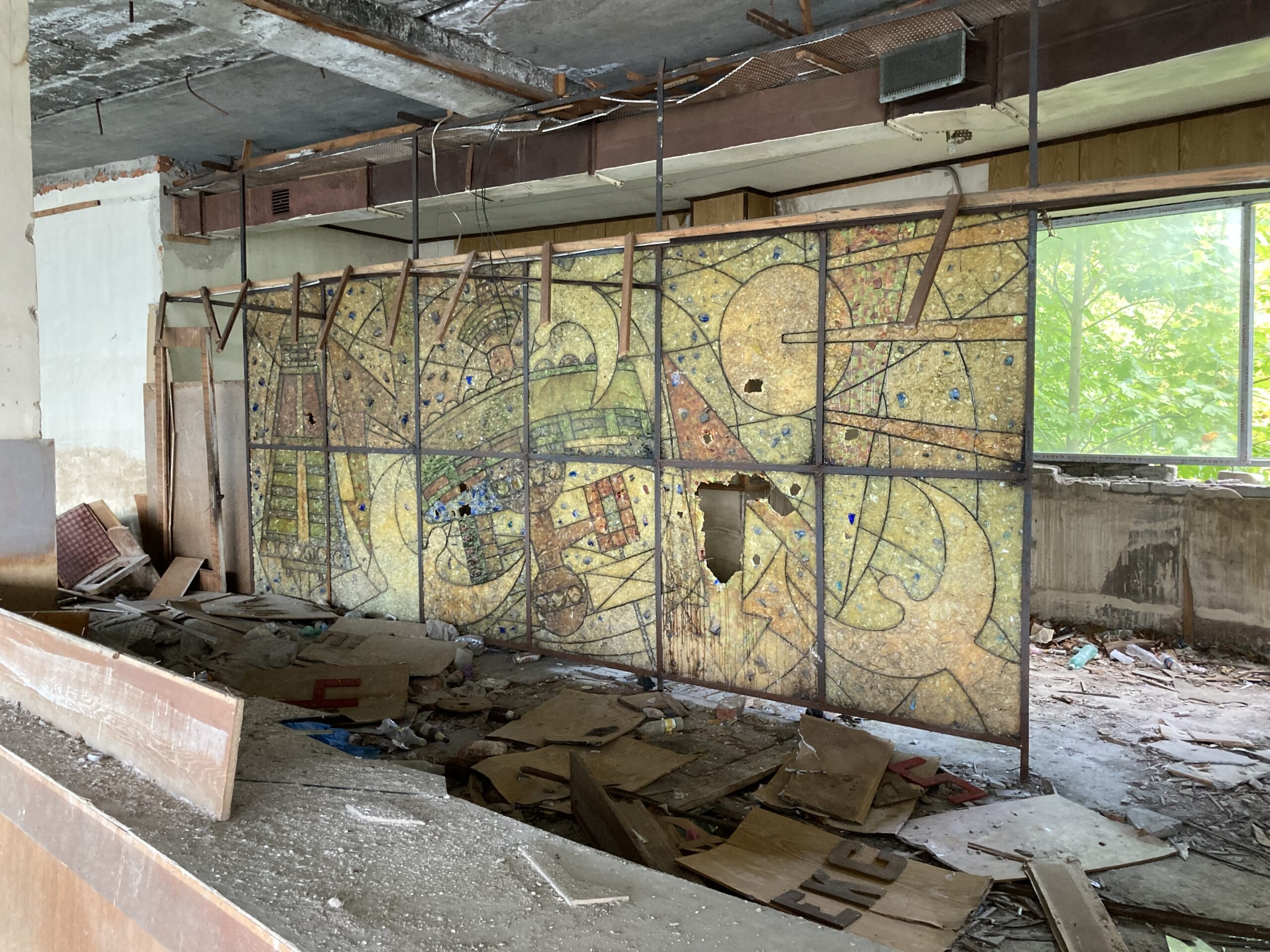
Immediately to the left of that relief one can find the old post office. Presumably, last time this place worked properly Gorbachev was still in power, when thousands of holidaymakers would flock here to see if their loved ones had sent any mails. Now, nothing much remains here, except a few Soviet trinkets (mostly in pieces) and a lot of garbage that the previous (not so considerate) travelers left around. There is a glass walkway that lets you reach the even more ruinous second floor, and that is where I found this particular glasswork which certainly saw better days. You need to get used to seeing such sights, because that was pretty much the gist of this day trip to Tskaltubo.
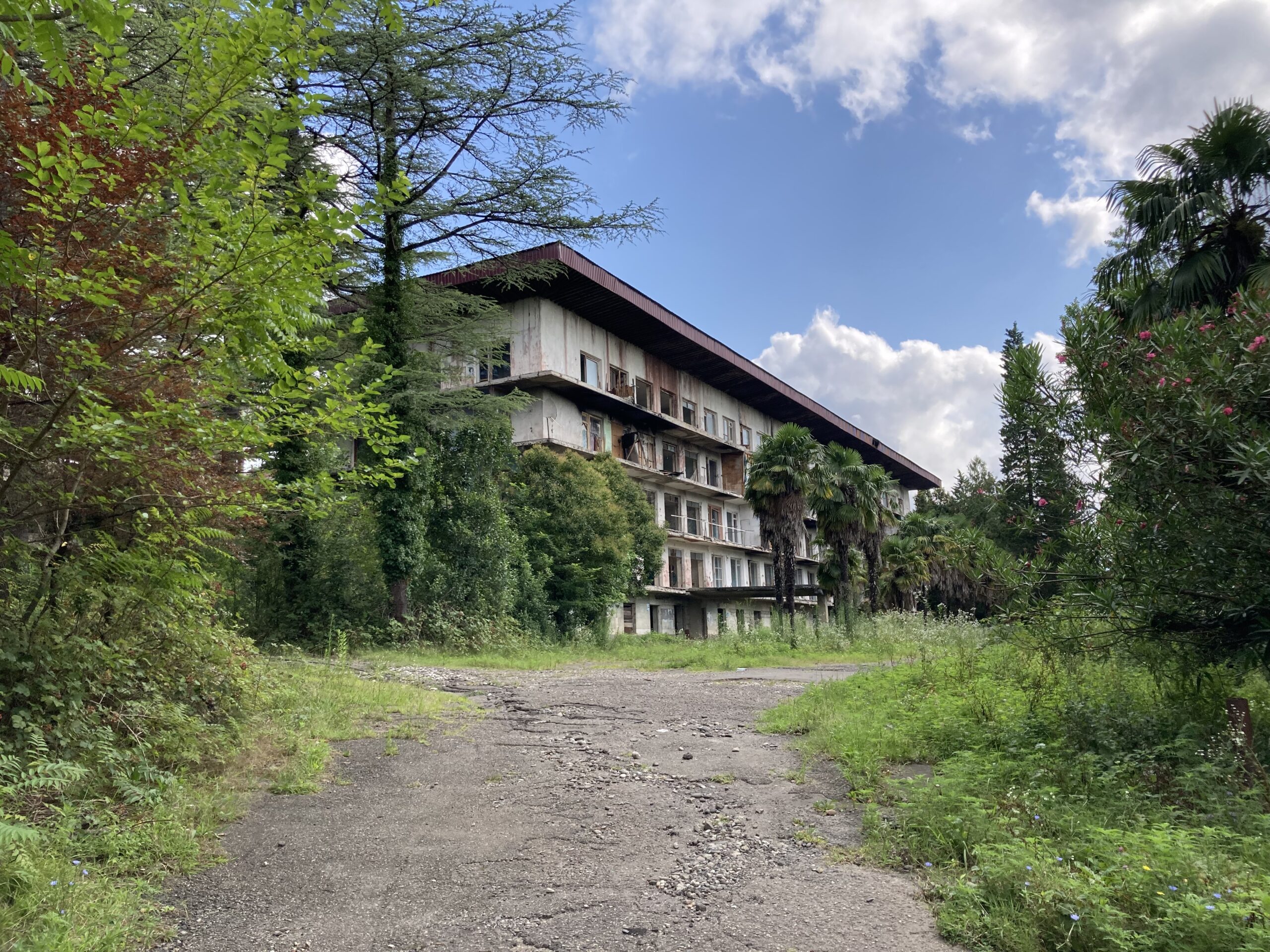
Tskaltubo is home to a plethora of sanatoriums, which is basically the glamorous term for some big and “luxurious” hotels that the Soviet authorities liked to build around this region. There are also some normal sized hotels as well, and even simpler apartment complexes, which were also built for holidaymakers. Though most of these places are abandoned (and often off limits), some of them are inhabited by people today, often by refugees from Abkhazia and South Ossetia after the Russo-Georgian War of 2008. These folks were promised new apartment blocks that would be built shortly after the war, alas, the economic realities of post-Soviet Caucasus meant that such promises could hardly be fulfilled. Some (according to a few friends, most) of these refugees eventually made their way out of Tskaltubo, using their own means, but some are still stuck here and they are certainly a highly visible part of everyday life in this otherwise mostly abandoned town.
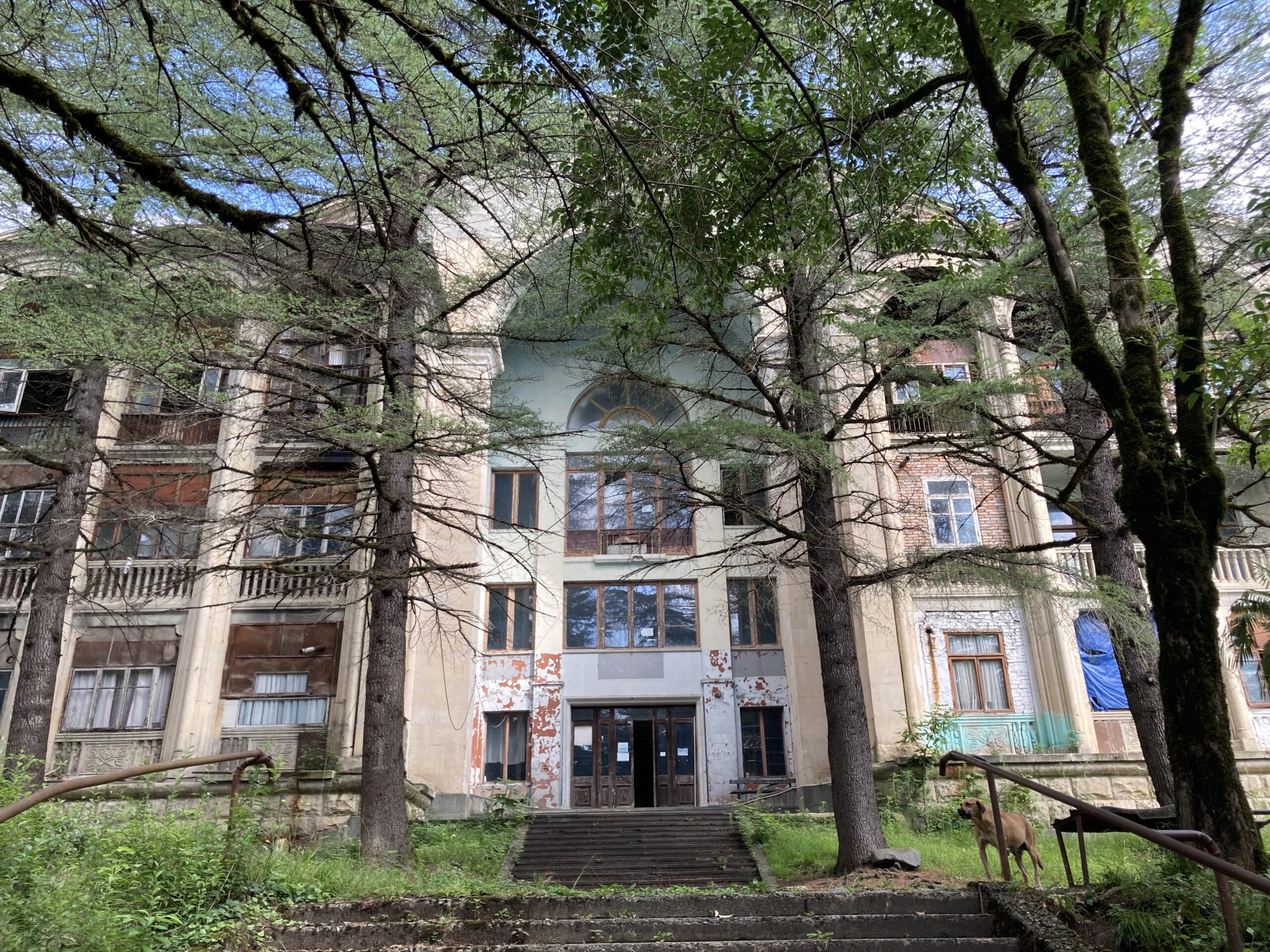
This is the Sanatorium Gelati. It is one of those sanatoriums that basically became a typical apartment block today, perhaps with some oddities from “way back.” Some travelers mentioned being able to get inside, some said they could not. We certainly could not. There were two dogs near the entrance (one you can see in this photo), and they launched themselves at us, barking endlessly, as their owner laughed at the occasion. No one bothered to leash the dogs, nor help us, and it was clear that we were not wanted there. It is a shame, but it is understandable. My mother noticed some clothes hanging around for drying, and some other paraphernalia that implied this part of town being far more “lived in” than the rest. Just as we would not want some nosey people poking their noses into our apartment, the already unfortunate denizens of Sanatorium Gelati hardly deserved much foray into their private lives as well.
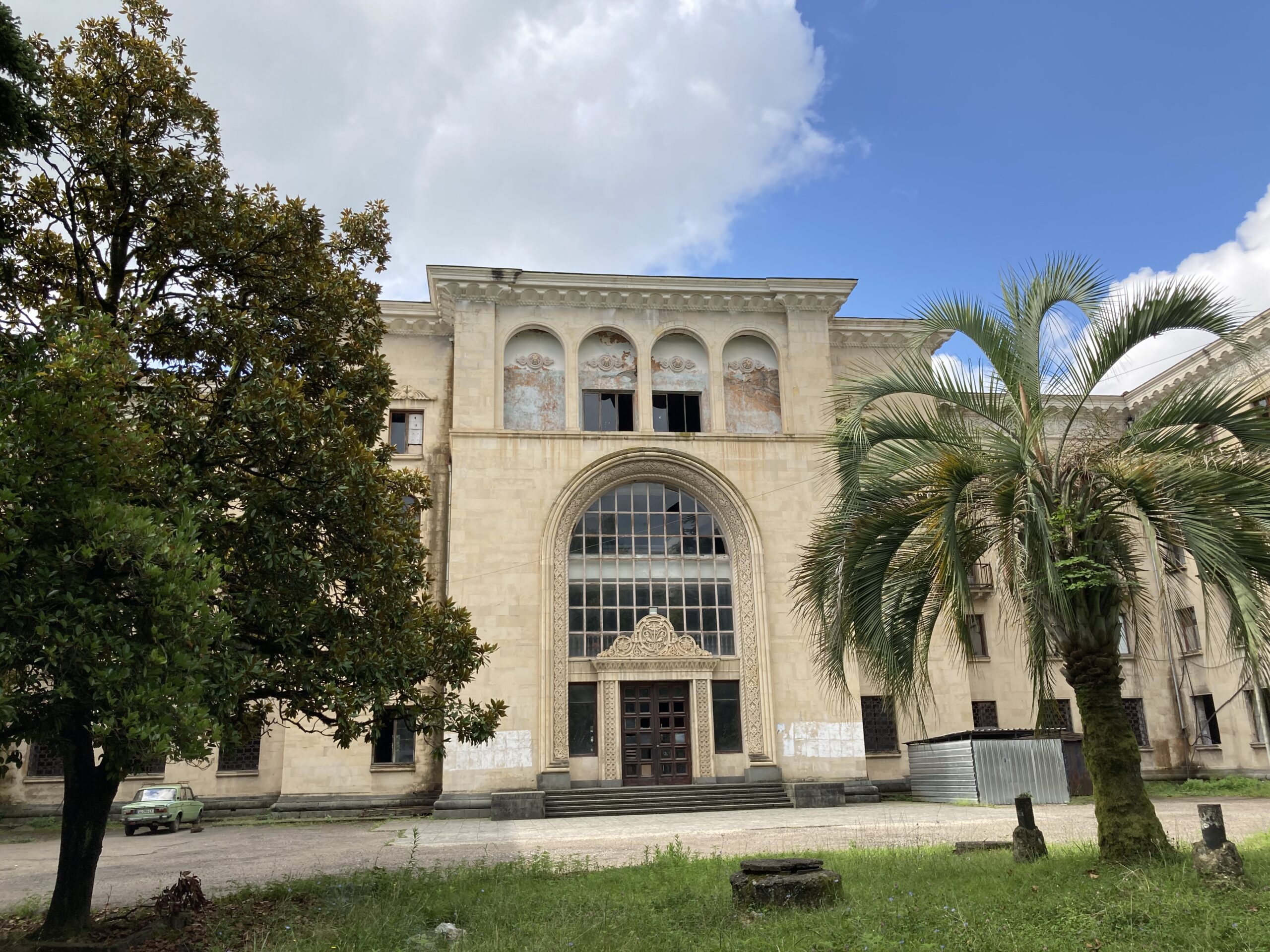
Admittedly a bit disheartened, but still high on morale, we marched on to the nearby Sanatorium Metallurgist. As the name would suggest, this is where workers working in certain heavy industries would rest during the Soviet period. Today, a lady with an extremely friendly dog guards it. She asked us for some money to “allow” us to tour the site. Given our lack of time and my desire to move on to other sanatoriums that I cared about a bit more, we kindly refused her offer. It would have been nice to spend a few more hours in Tskaltubo, however, given how scorching the summer heat was, I for one (and certainly my mother) preferred to be done before lunch if possible.
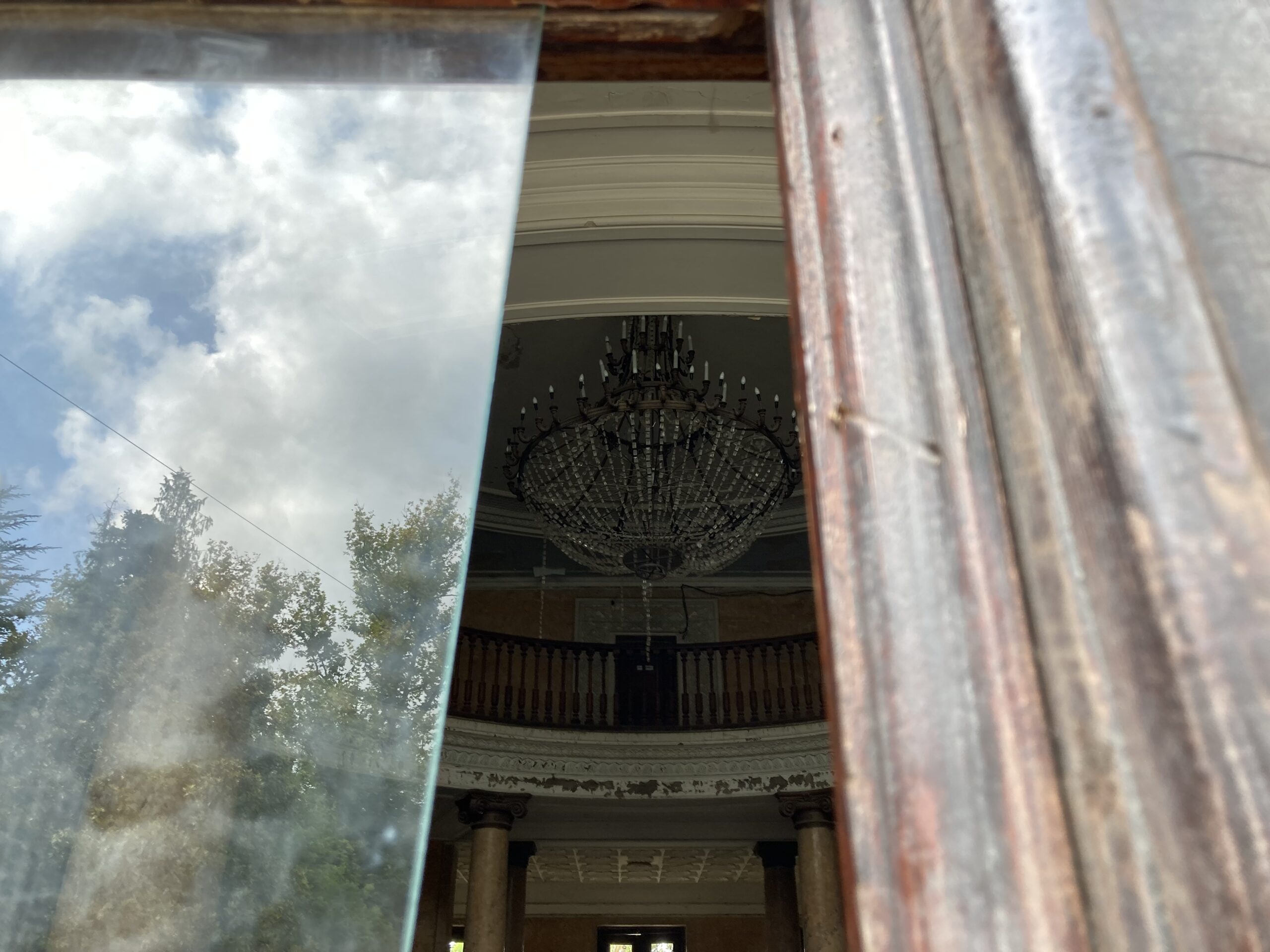
Though we were certainly in a bit of a hurry, I did not miss the chance to take a photo of this chandelier from the cracks in the glass pane of the front door. It was a magnificent sight to behold but seeing that atrium with no soul did feel a bit sad to say the least. Though I enjoy urbex and love hunting down these abandoned sites, it never uplifts one’s mood to wander around such abandoned ruins given how there is often some sort of a tragedy (at least for the locals) that are involved in the creation of such spaces to begin with. These atriums and halls are supposed to be filled with jolly holidaymakers, not with stray dogs and a few curious travelers.
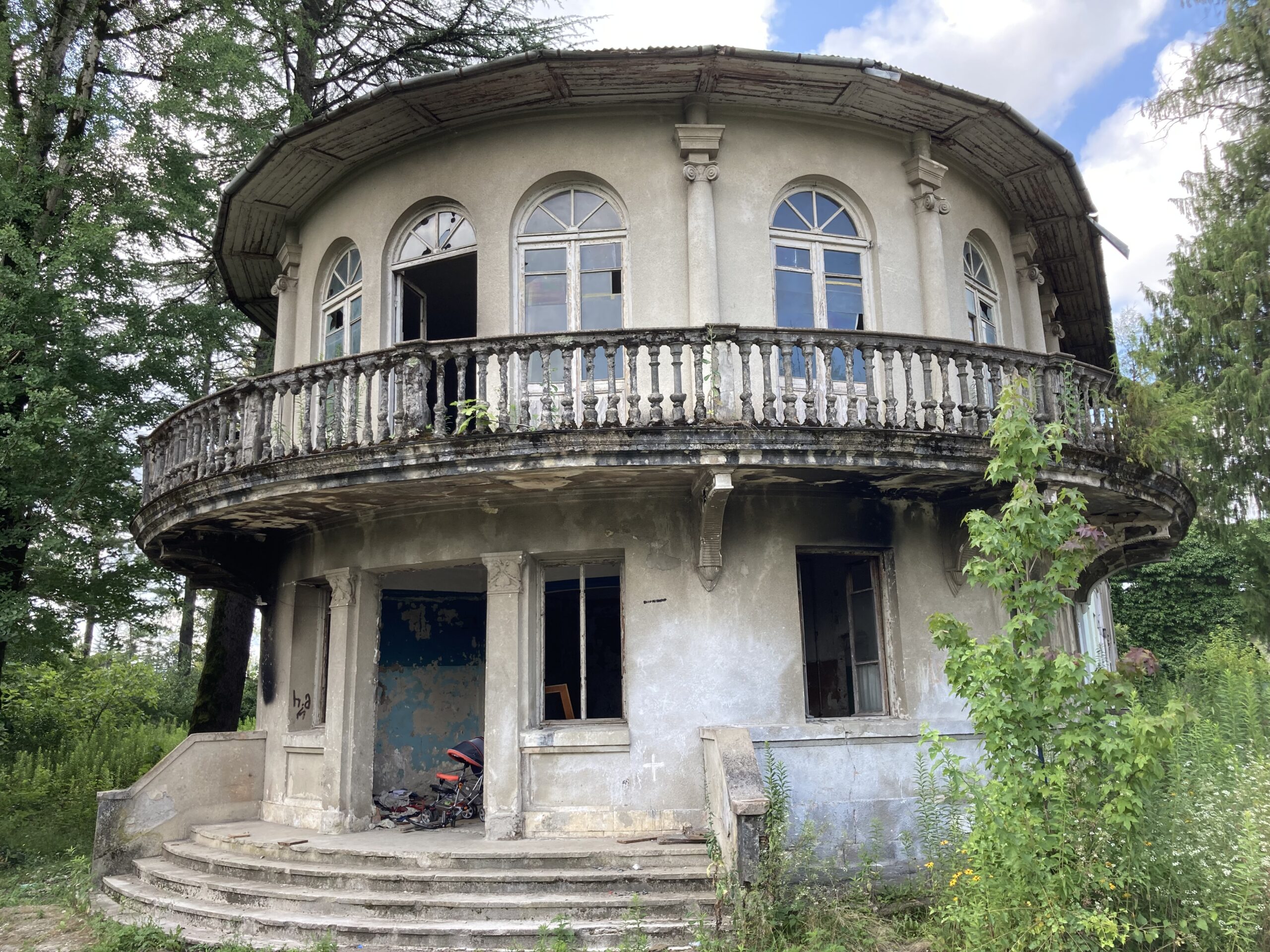
There are countless abandoned structures in town, and in all honesty, I had neither the time nor the will to visit all of them. There does not seem to be a full list of such buildings anywhere on the internet too, and that is to be expected given how fast these buildings are changing hands and names. This one, for example, was already sold to an investor, and a security guard was walking around its perimeter, which was a reason for me to stay away from it, though he seemed quite nice. In any case, I would not be so considerate of “private ownership” later on in the day.
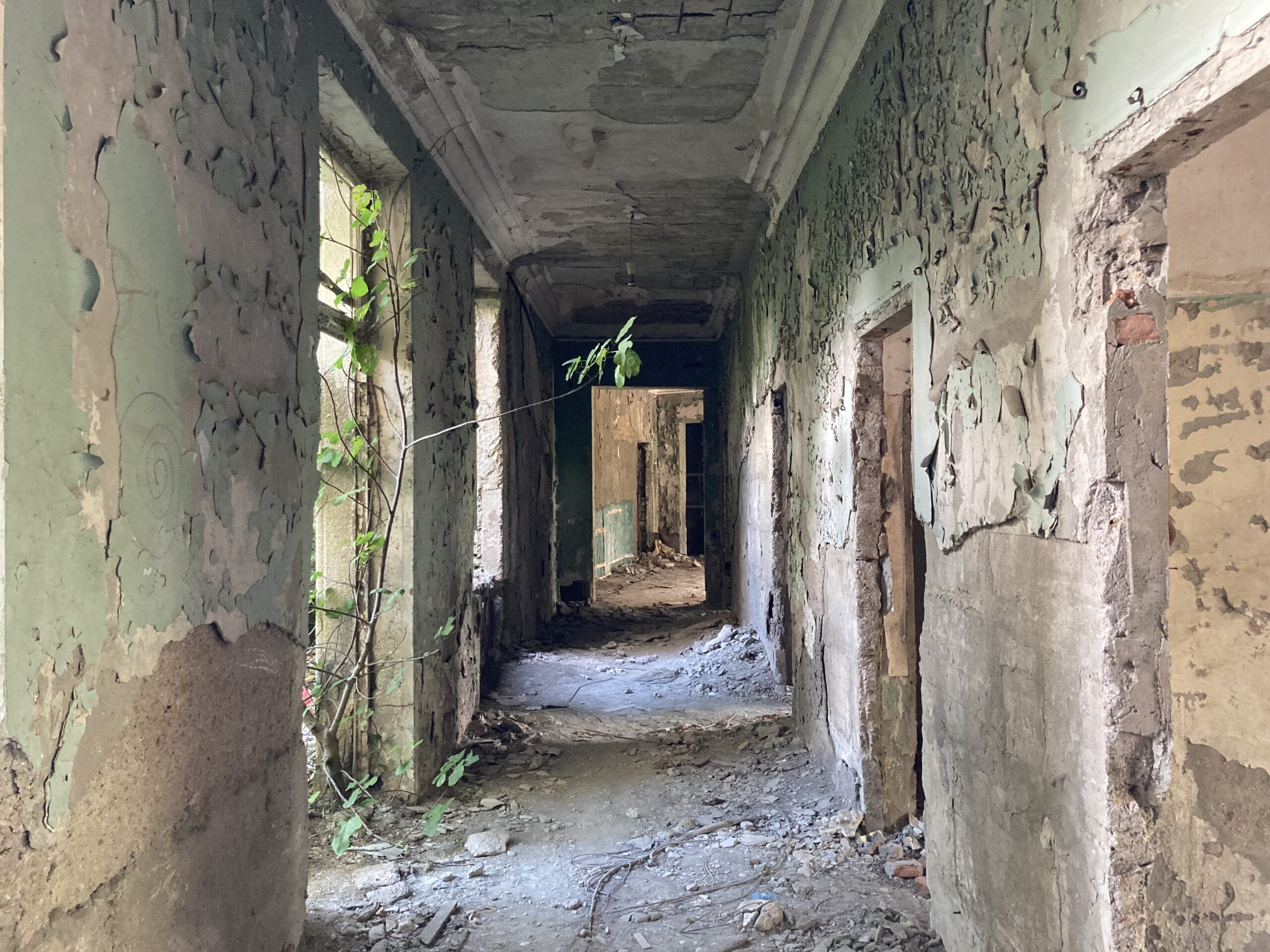
After getting a bit lost in the wild, we finally found a way to “break into” Sanatorium Medea. Since we sort of lucked out freely entering through the front gate in the previous two sanatoria, we figured we might as well try the back door. Well, it was actually the side door in this case… Anyways, it worked out, but later on I realized that the front gate would have worked just fine in this case as well. Well, I am sure in the months it took me to publish this piece the entry situation there already changed significantly, so you too may have to resort to less than obvious paths if you want to visit this sanatorium.
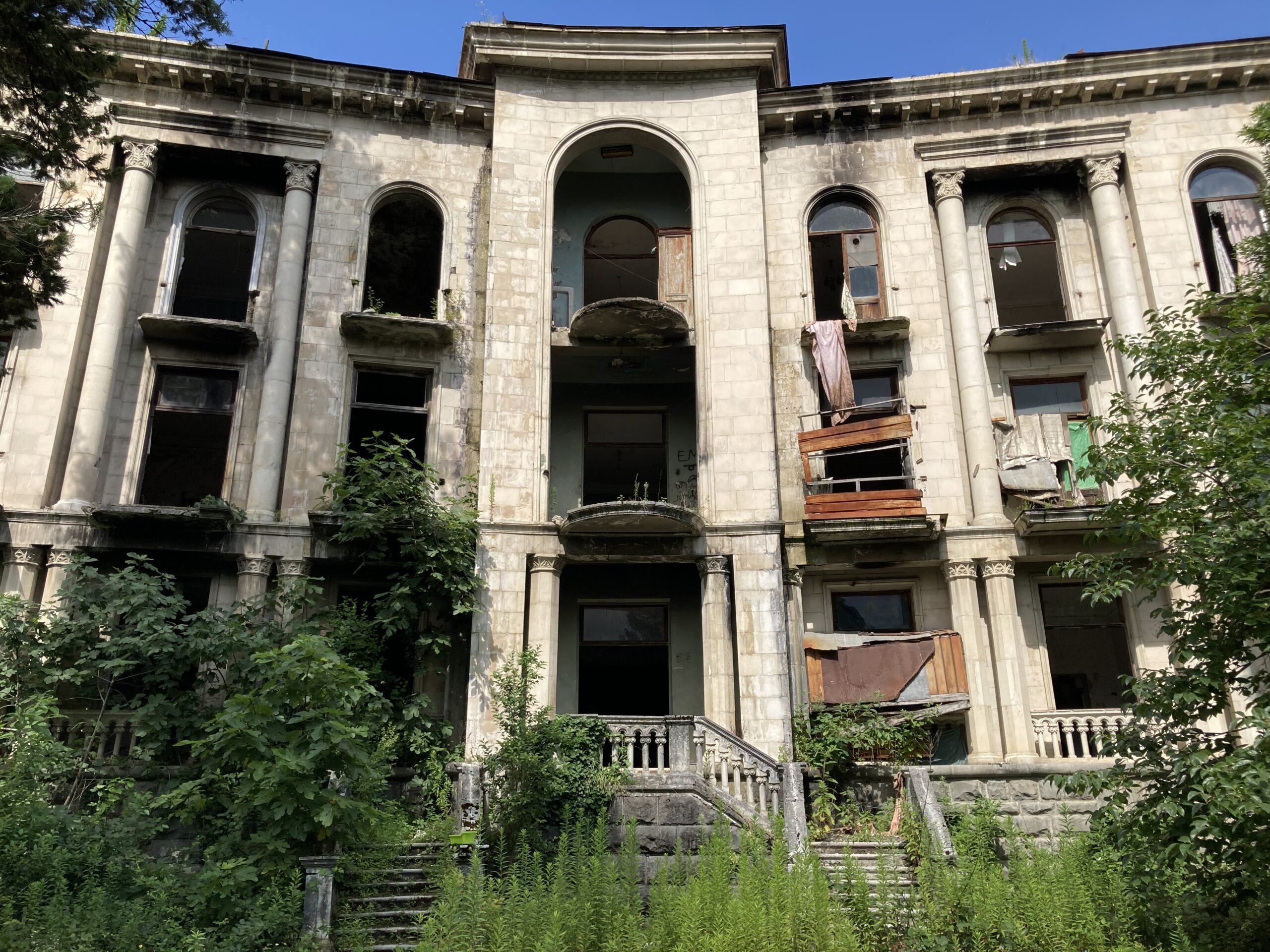
This was seemed to be the secondary entrance to this sanatorium, the one we came out of after entering the building through a destroyed side entrance. As you can see, it is half inhabited, and that half was also protected by dogs that barked relentlessly. Tskaltubo is an interesting place, I have seen the most vicious dogs of my life there, and also the friendliest ones. The stray ones will always come to your side and “protect” you on your journey, while the ones that are “owned” will probably rip you apart the moment you set your foot inside their perimeter… It is wise to be cautious, though I am yet to hear any truly tragic stories.
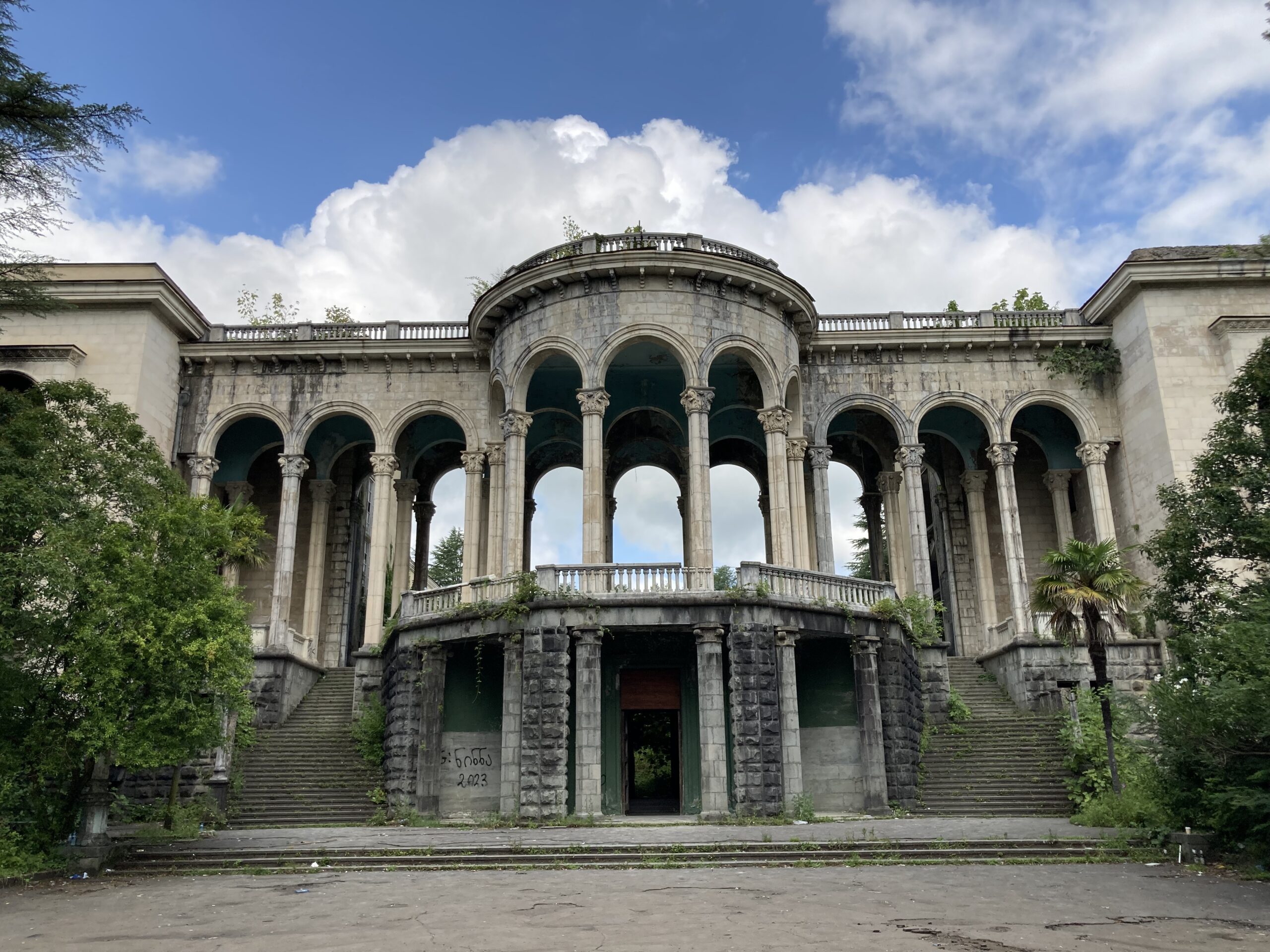
This is the main entrance to the Sanatorium Medea. It was the most majestic one we would see all day long, mostly due to its size, but it would not be the best “thing” we saw that day. You need to keep reading on to find out what that was. As the Turkish saying goes, the patient dervish achieved his goal.
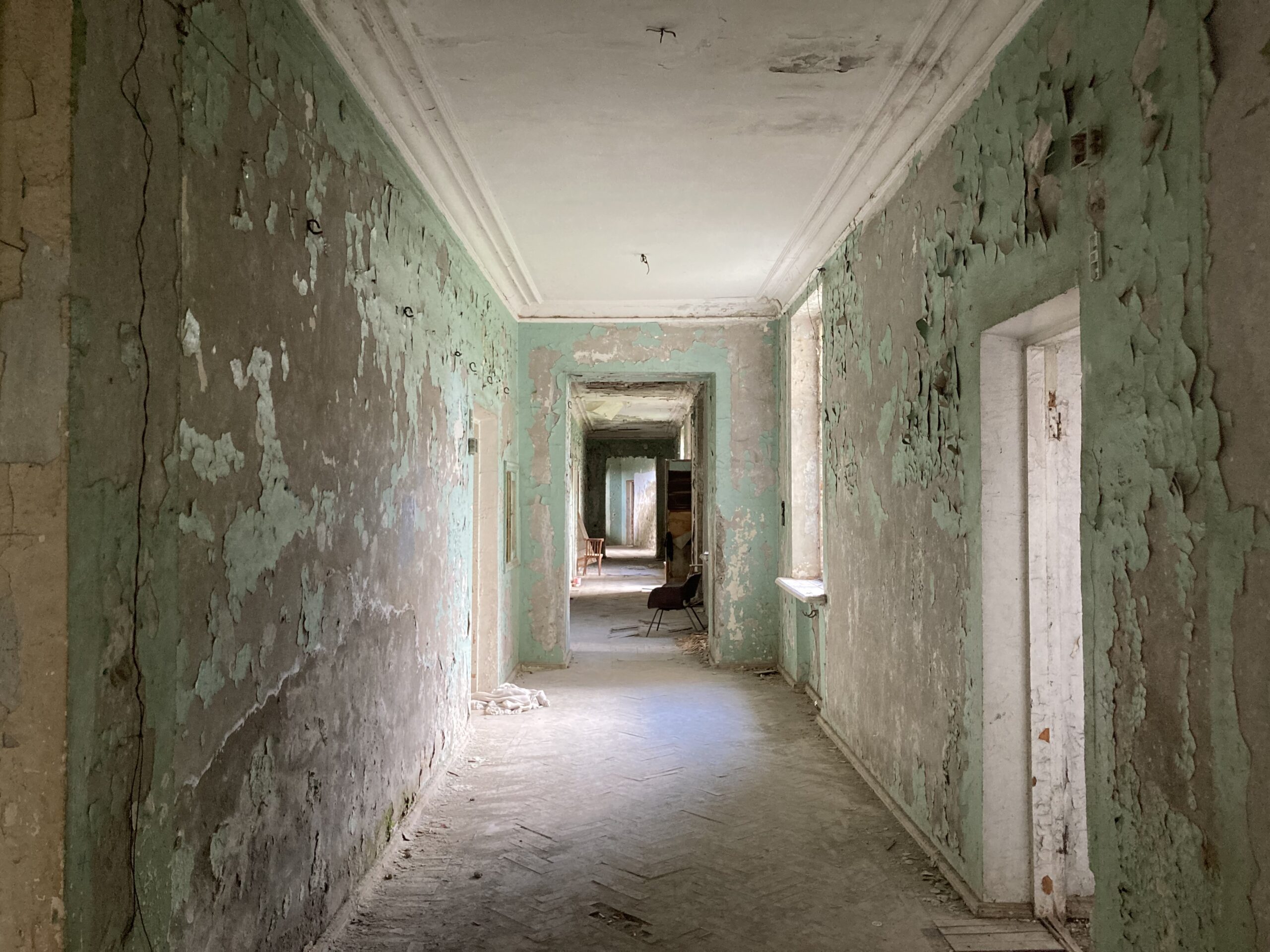
Once again, the insides of the sanatorium are in a worse state. This however does not stop its denizens from living in it. We could clearly hear a man taking a shower with water he pumped out of a nearby well that we found later, and we did hear kids playing some sort of a game in the corridor at the end of this photo. Now, to be honest with you all, I did not dare, nor did I desire to venture too much into the living spaces found in these derelict buildings. Once again, if I were living there, I would rather not be bothered by some overly curious visitors trying to see what I do or how I shower. It does not hurt to be a bit thoughtful sometimes, ethics and all.
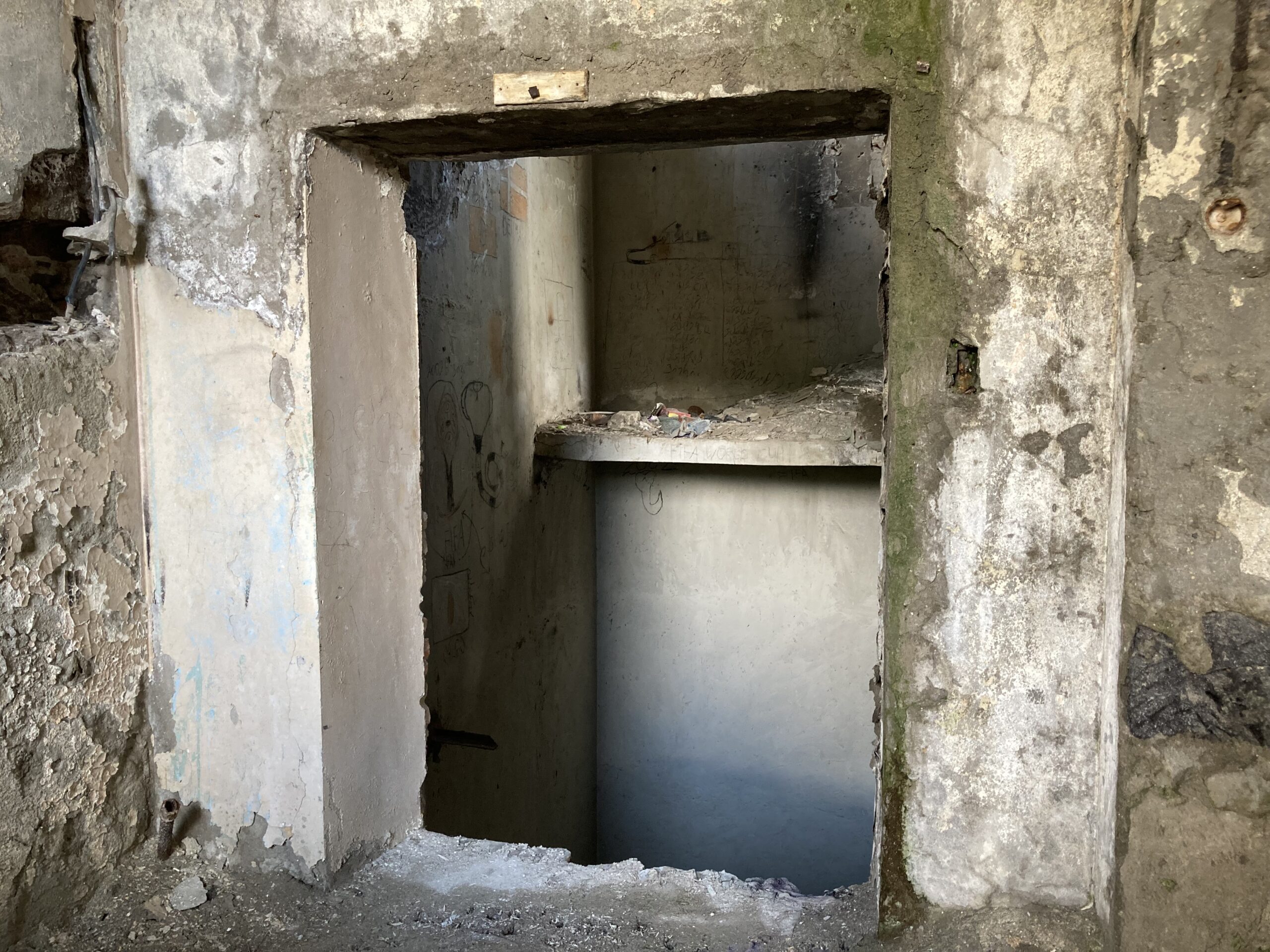
A few floors up from there, I came across this elevator shaft. Seeing how I did not see many of those in other derelict Soviet-era buildings, it got excited quite a lot. Well, frankly, I also did not (yet) see all that many such buildings with multiple floors before, so I suppose it was to be expected… Nevertheless, just imagine all the conversations that must have taken place in this lift, likely among the Soviet elites who frequented this place, as they went up and down to their rooms, enjoying their “right to rest.”
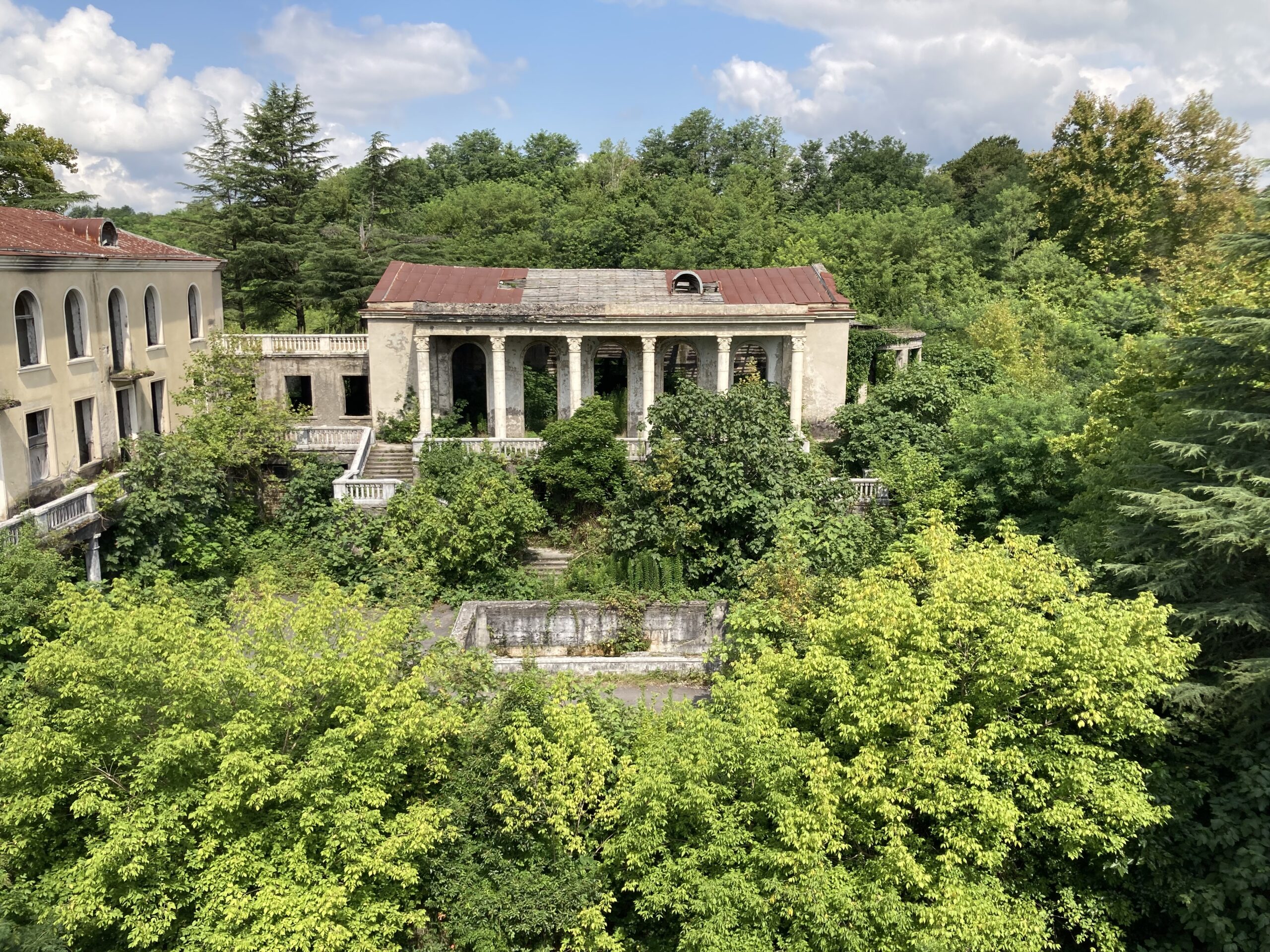
This was the courtyard of the Sanatorium Medea. It had a pool and all, but surely that pool has seen much better days. It was not anyone, but some frogs that swam in it now, in its muddy waters, not that there was enough water in it for an actual swim. The other wing had nothing much going for it, and the building to the left seemed to be inhabited by some folks, so I did not really venture in there as well.
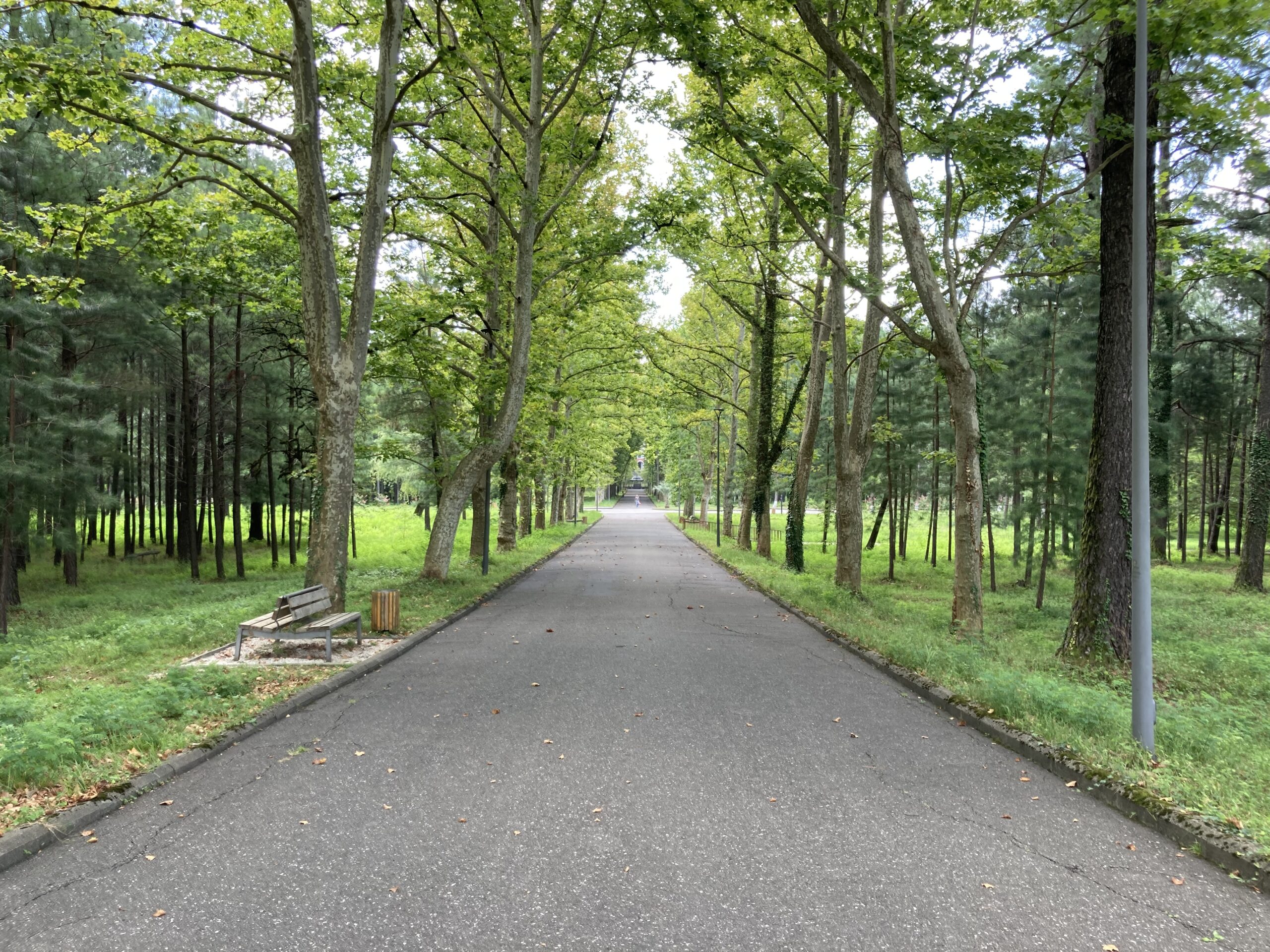
All these sanatoriums and more are found around the central park of Tskaltubo, which itself houses some hidden treasures that we will get to in a bit. It also provides a leafy escape to the rather unbearable summer heat on the outside. Despite how satisfactory this trip was turning out to be, I could not help but thank myself for doing my exchange semesters at Vancouver and St. Petersburg in the last few years, where I was spared the torturous Mediterranean/Pontic sun for a while. After all, Istanbul itself hardly has comfortable summers, or even springs for that matter.
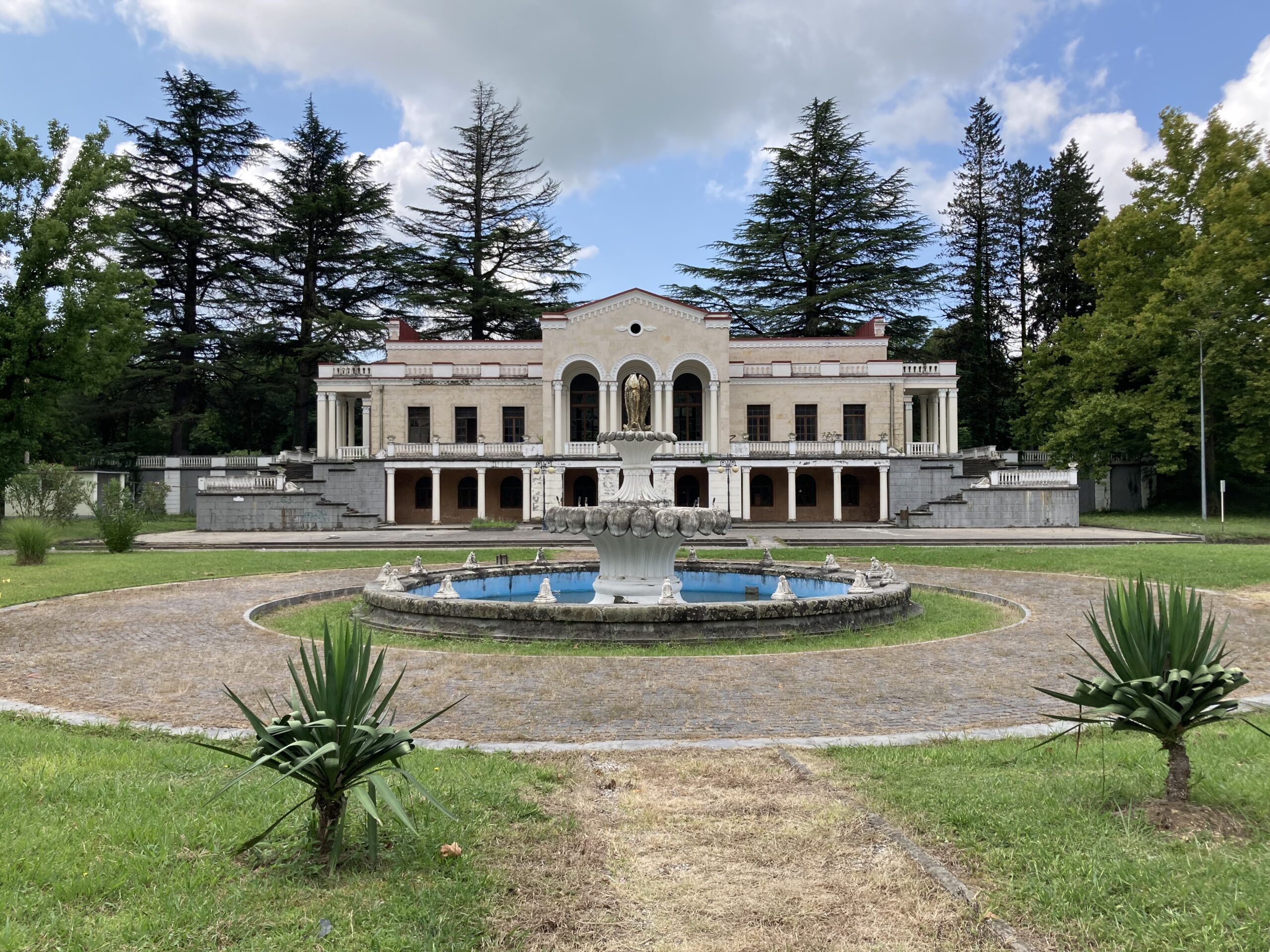
This used to be the train station of Tskaltubo, and according to some local babushkas (and statistics), a rather bustling one no less. Now, just imagine. You take a long, very long, train ride from Moscow to Tskaltubo, just to enjoy its mineral rich waters, and this is the first place you come across. What must of those folks felt at the moment, besides being tired and excited? It is not used anymore by anyone, which is just a shame really. Especially since it certainly looks a bit more opulent than any other small Soviet train station that I came across so far.
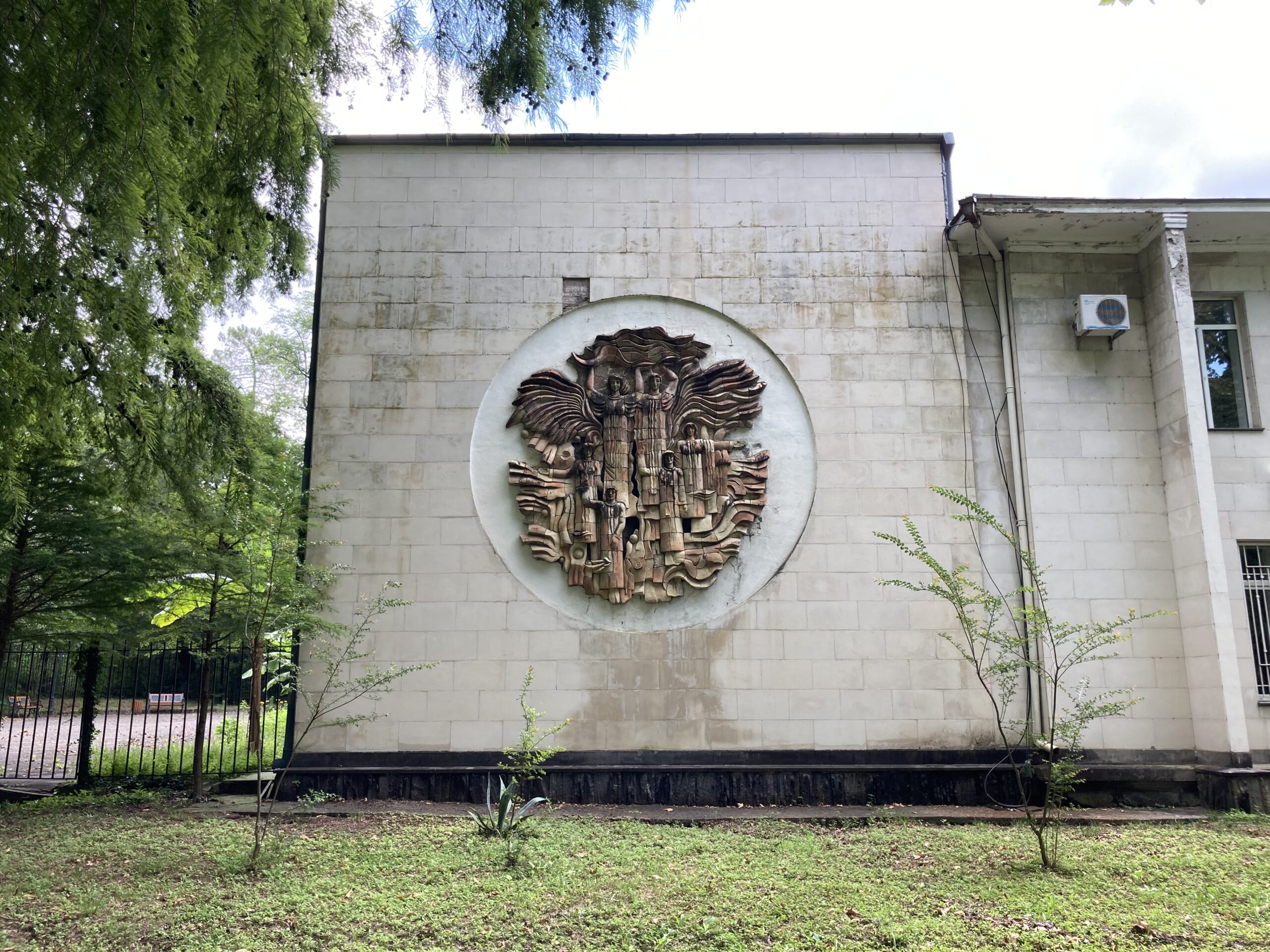
Reliefs and mosaics from the period back when the Soviet Union was still a thing proudly adorns the walls of many buildings in Tskaltubo, even the more governmental ones. It was a nice change of pace to see that they were not destroyed, nor covered up, as was often the case with many others elsewhere in Georgia. Though this is changing rapidly as well… Another day trip I took out of Kutaisi, the one to Chiatura, made me realize that despite it being very far away from any administrative centers like Tbilisi or Batumi, its Soviet heritage was either completely gutted out or sealed away from prying away as well. Though I can certainly understand how delicate the issue is for local authorities, as a historian of 20th century, I cannot help but sympathize with numerous Western travelers who visited Turkey and were disappointed to see that the ancient Greek cities and old churches were sometimes not only abandoned to their fate but also outright vandalized. Though the more avowedly communist imagery, like the reliefs of Lenin and Stalin in Chiatura, will surely be nigh impossible to find in most post-Soviet countries soon enough except the Russian Federation, one can only hope that less political pieces of art will somehow be spared destruction.
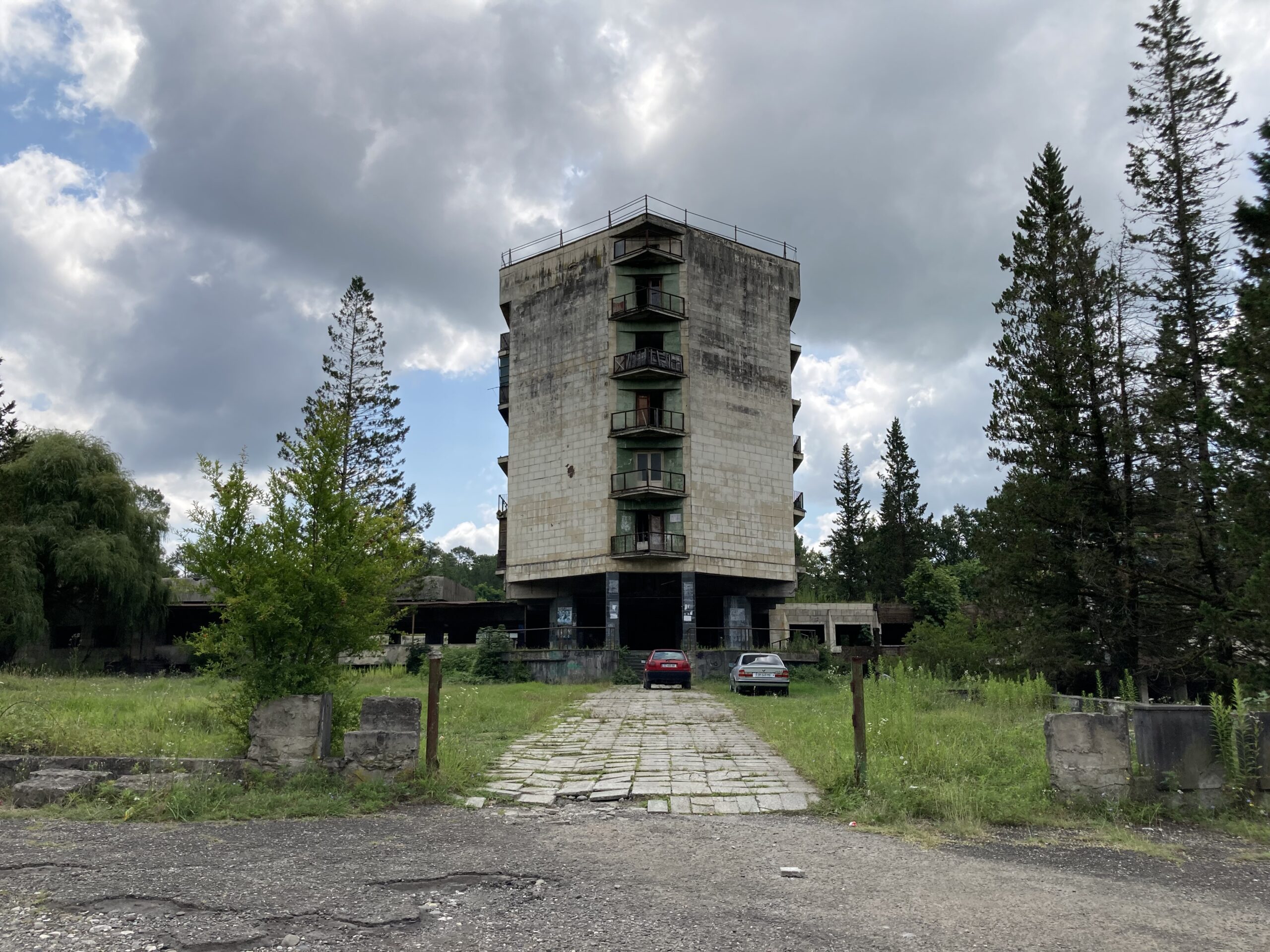
Speaking of Soviet mosaics, the best one I saw up until this point just happened to be in Tskaltubo. Frankly speaking, after my recent travels around Kazakhstan, I can now confidently say that there are reliefs and mosaics that are much better than the one you will see below in cities like Karaganda, Pavlodar, Petropavl, and Almaty. Nevertheless, this particular one in Tskaltubo is quite magical on its own way. It may not be the biggest, nor the most intricate one, but likely it is the one that will be etched in my memory until the day I die. My fond memory of it is helped mostly because it was found here, in Hotel Aia… No one lives here today, no one can due to the burst pipes that turned the first floor into a lake, but these ruins are home to something special.
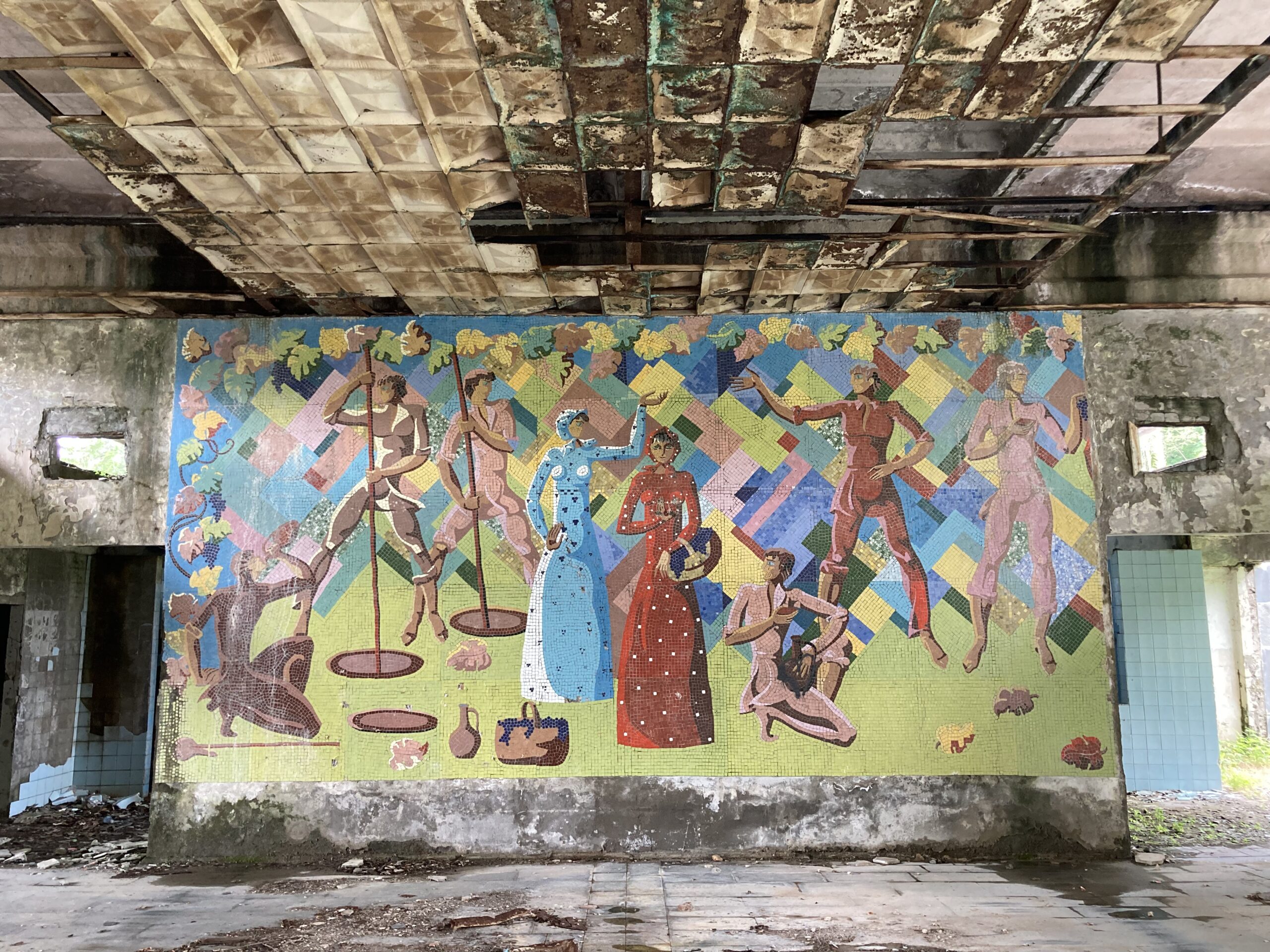
This abandoned hotel is home to this sizeable piece of quite well-preserved mosaic. I cannot even tell how it survived to this date in this state. It is open to the elements on all sides, entry is not barred to anyone, and the hotel is not even so far away from the main road. Rest of the building is in a terrible state, but this mosaic, it stands out quite vividly, a fact that the simple camera on my phone could not capture all that well.
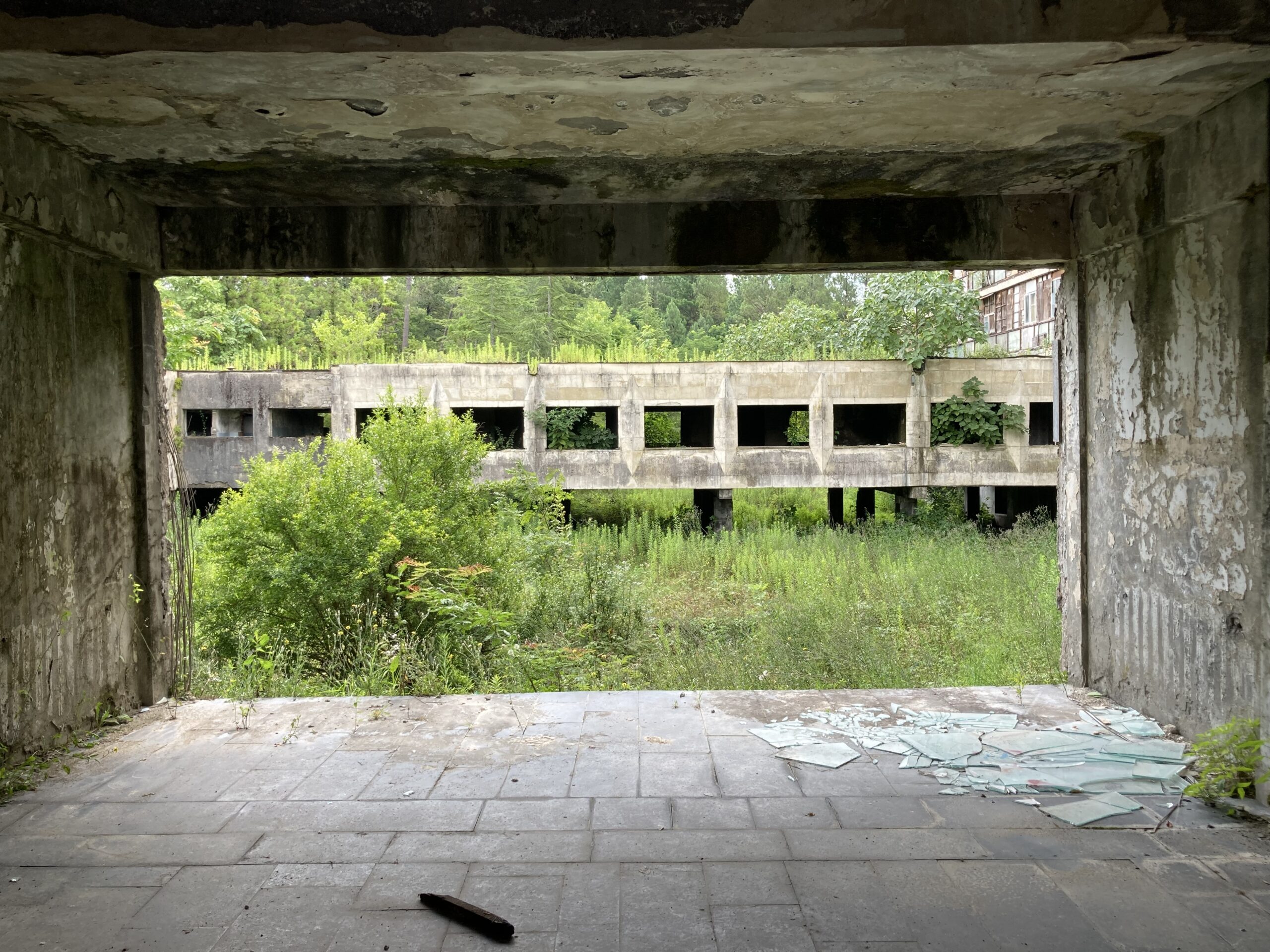
When I said this artwork was out in the open to the mercy of nature, I meant it. This is what it looks like inside the area that it is found in. Broken glasses, grass and shrubs that sporadically overtook cement, wind and rain easily making their way inside, and so on. It is nothing short of a miracle if you ask me though my surprise likely has more to do with seeing perfectly preserved mosaics being intentionally destroyed or covered up in the rest of the country, while seeing the exact opposite happening here.
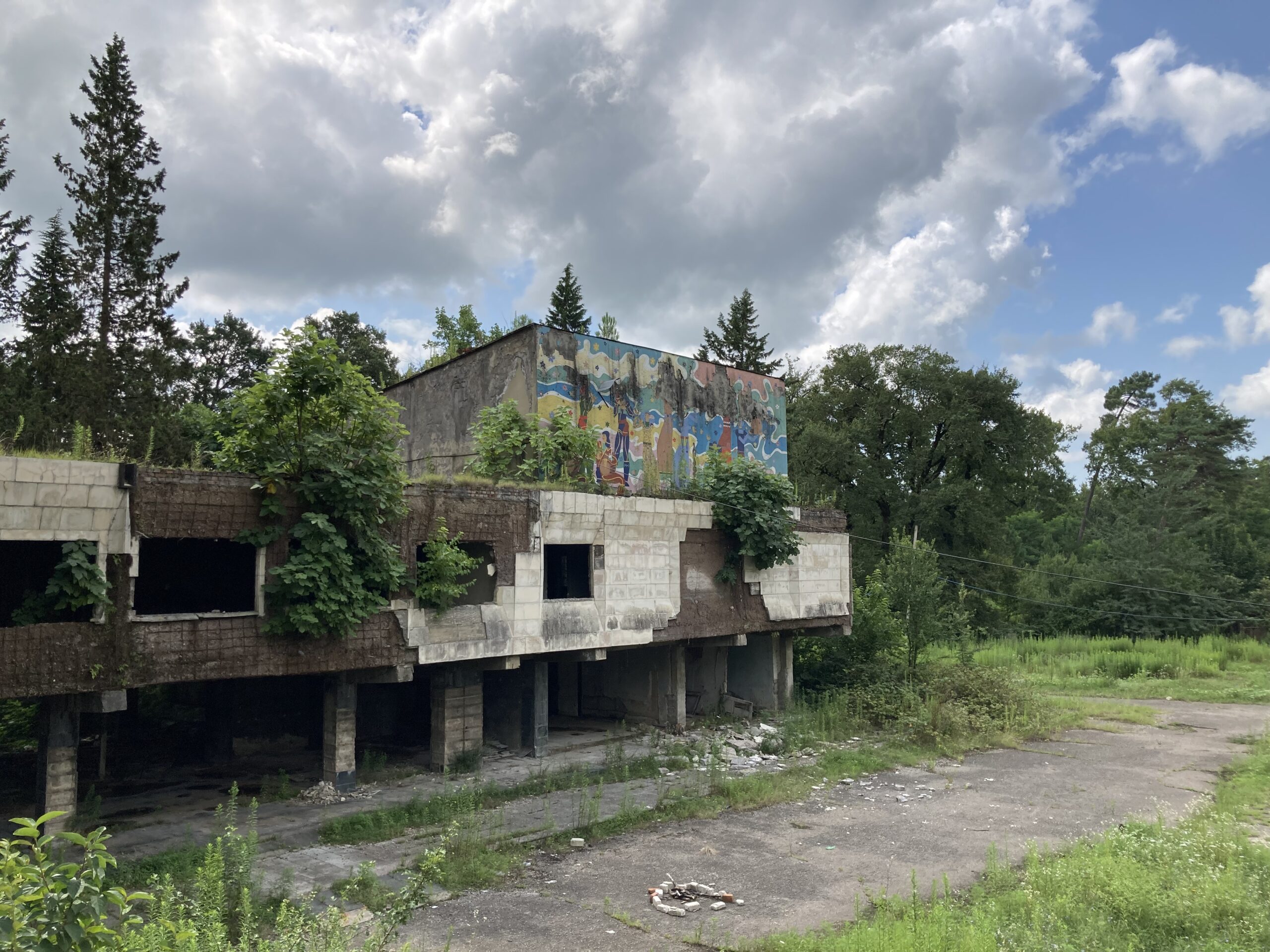
To my amusement, there are actually two mosaics in this building, but the other one, likely due to being even more exposed to the nature’s forces had seen better days. It is a shame, but nothing much can be done about it now.
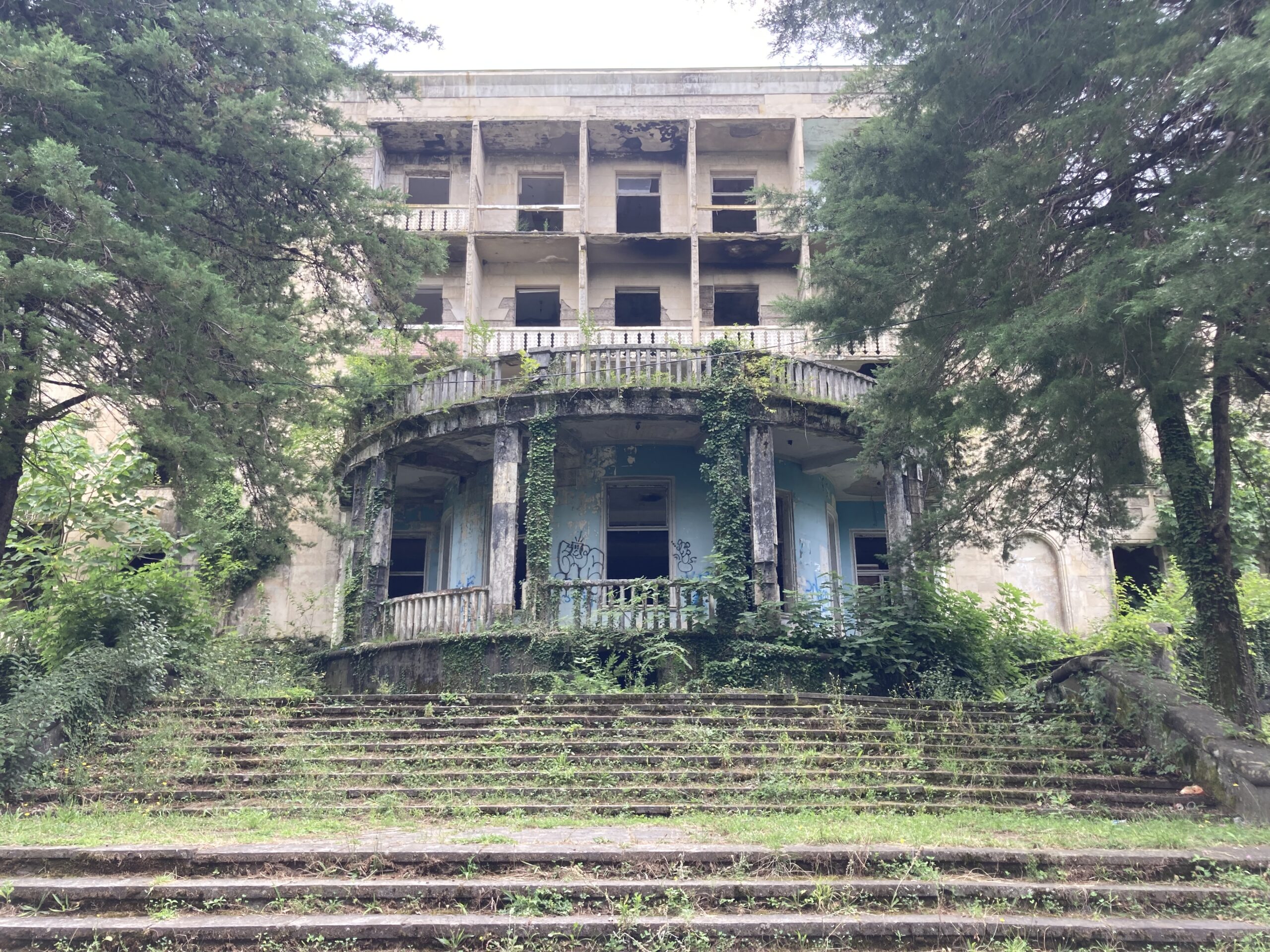
As we kept walking around the park in a counterclockwise route, we came across the Sanatorium Savane. This was reserved for the members of the Ministry of Defence back in the days and today no one lives there. That makes it one of the best sanatoriums to visit, you literally cannot bother anyone, and no one can bother you. Sadly, there is not much left to see inside nowadays, what little memorabilia there was is already taken by some of its previous visitors, likely as a trophy since some urbex travelers love such “bragging rights.”
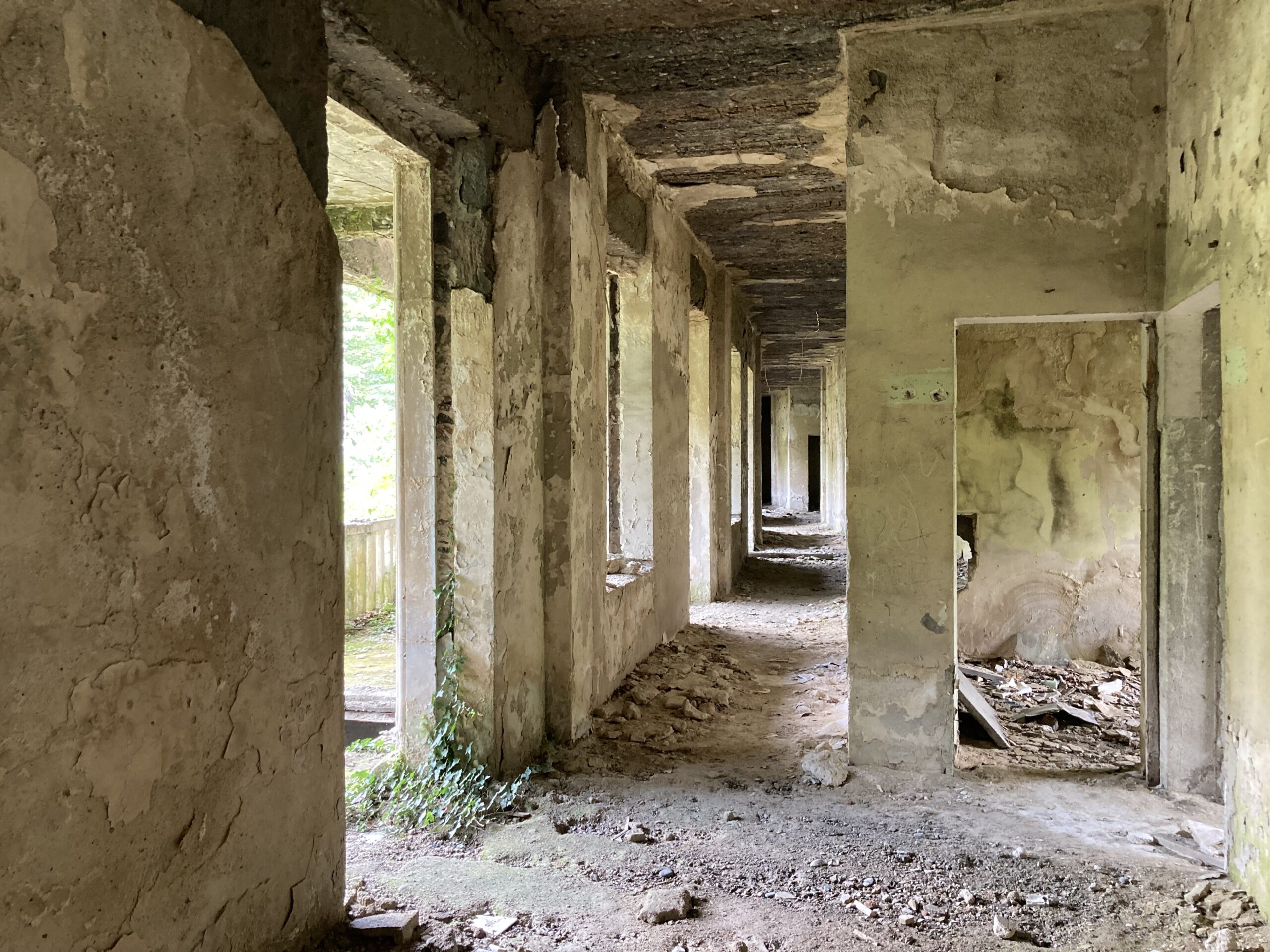
With that being said, even a walk in its admittedly creepy corridors is a joy in itself, and a unique opportunity that does not come often. Just be aware of glass shards all around, and some other simple hazards like that. I did hear of a young boy who fell through one of the cracks in the floor from our Airbnb host, so it cannot hurt to be a bit careful.
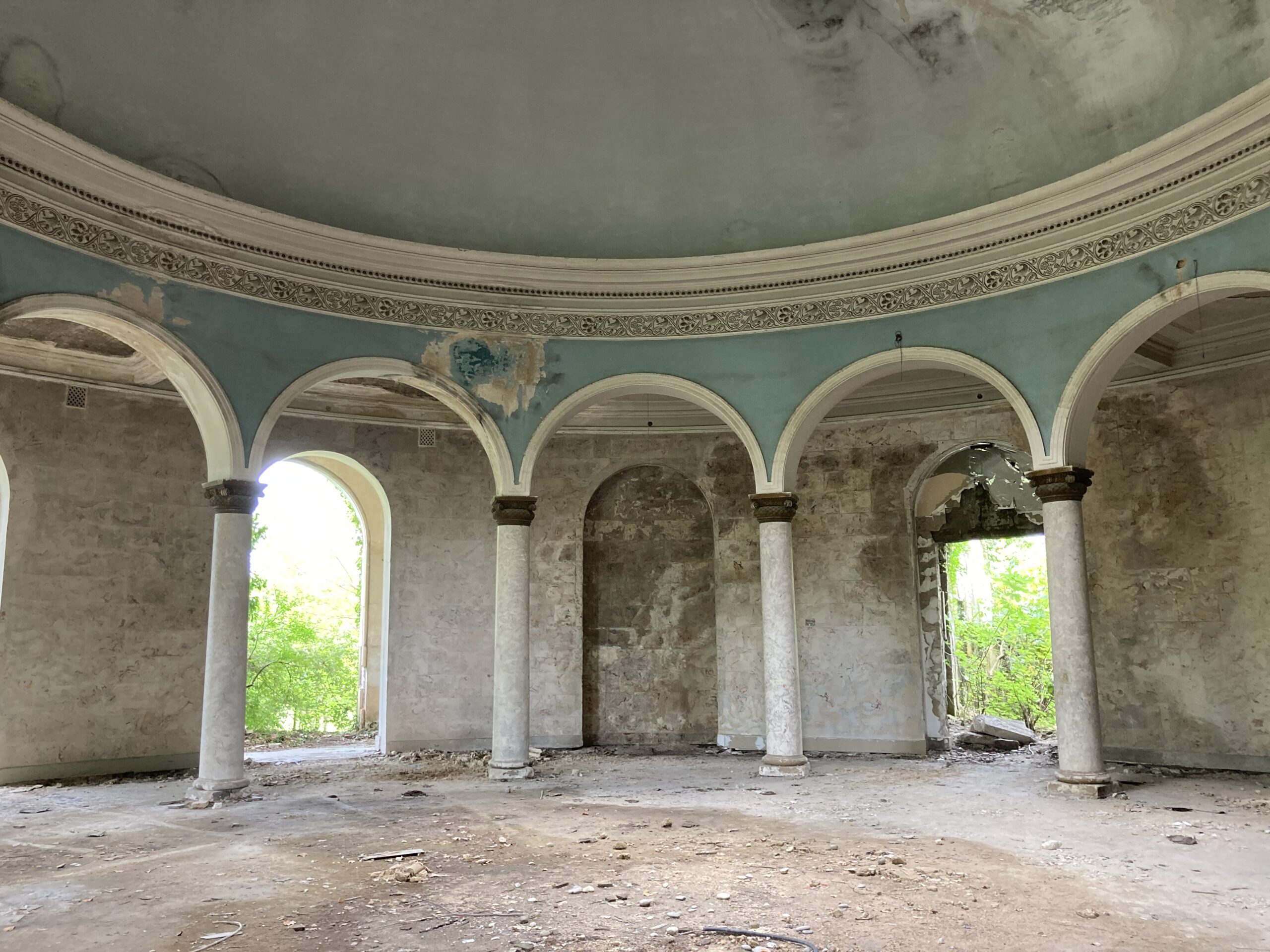
Speaking of hazards, other than a few barking dogs and the less than ideally maintained floors of these now defunct hotels, I have to mention the nettles that can turn your small walks around these structures into a very unsavoury experience. Literally a few seconds after saying how lucky we were since we did not come across any nettles here, both me and my mother were stung by some pretty nasty ones. It is nothing serious, and it cannot even truly “hurt” you per se, but it is nevertheless inconvenient to have a weird sizzling sensation on your legs for a few hours. So, do be aware and wear something that covers your entire body.
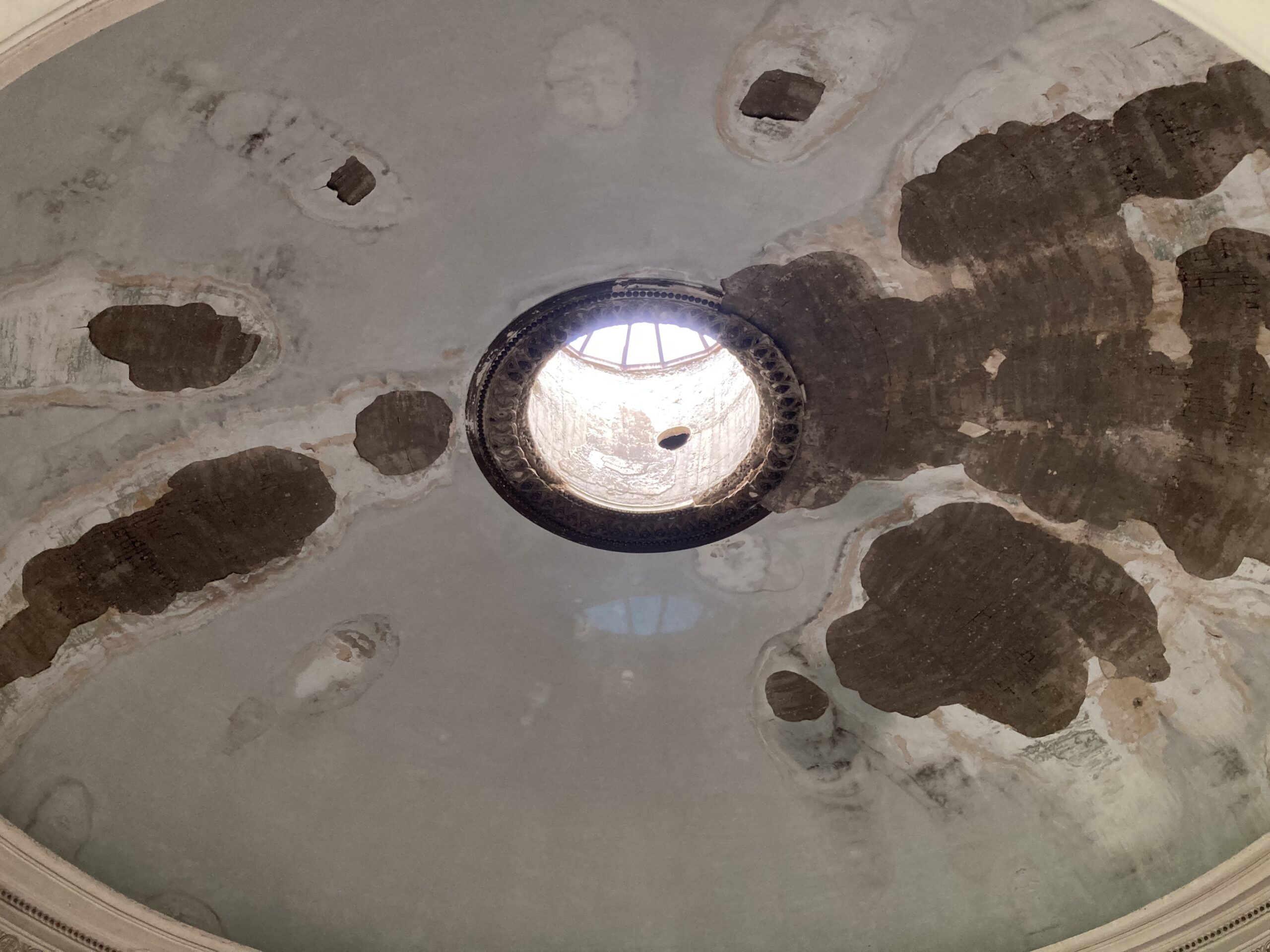
We “battled” those nettles just to get to Sanatorium Imereti, which had a formidable security booth at its front entrance. In hindsight, that was probably not necessary since there was no one in the said booth. Nevertheless, we wanted to make sure that we could see what it had inside, and we did not want to risk it with an obvious frontal approach. Furthermore, just as we left this complex, we did hear some chatter coming from behind us, so perhaps the security was in fact there, just taking a stroll around the site.
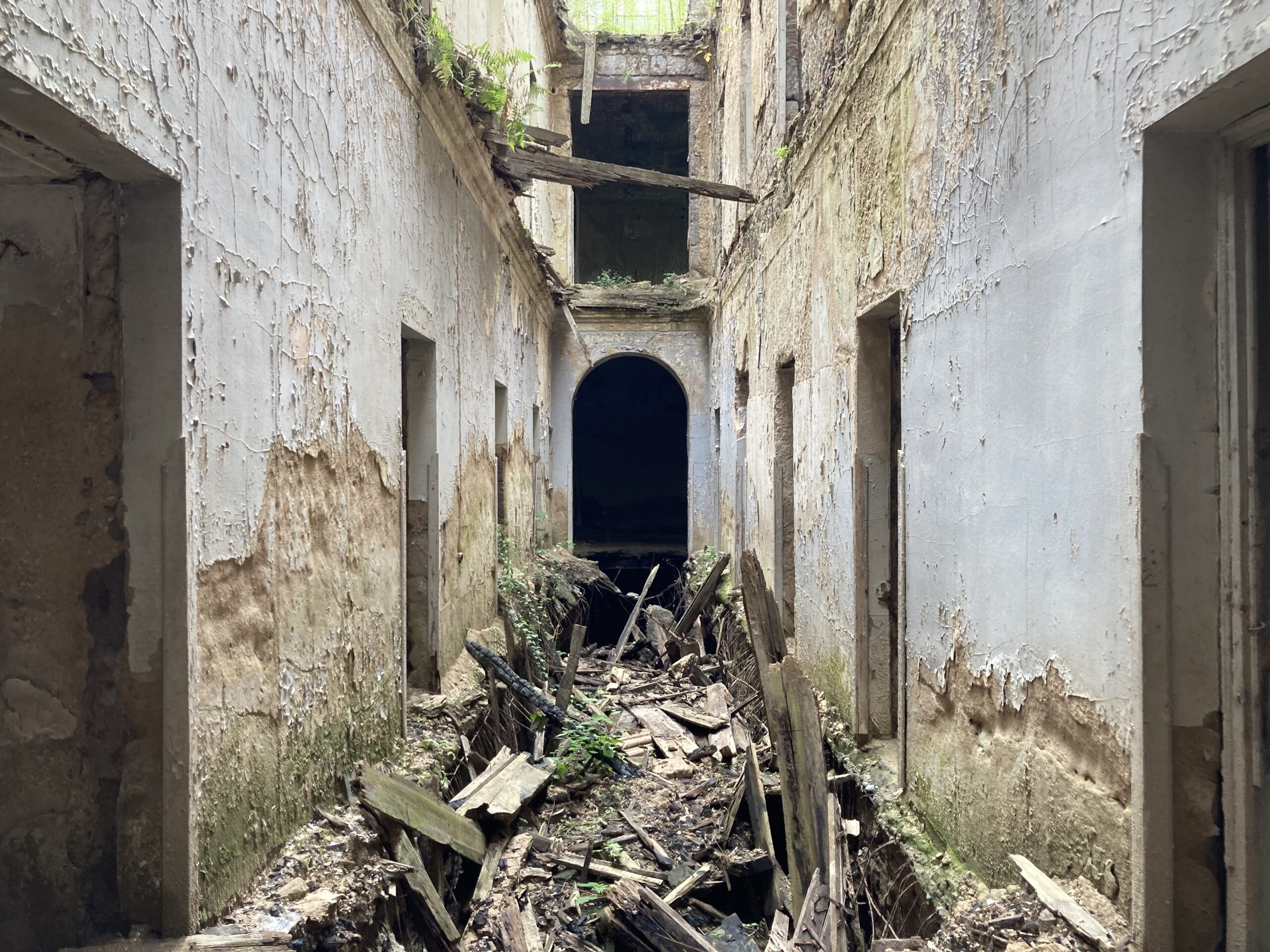
Speaking of the sanatorium itself, it is completely in ruins. It is also one of those complexes that were sold off quite recently, likely to some foreign investors, since Qataris, Egyptians, and a few others are already very much interested in investing into the region given the fact that Georgia (and especially Kutaisi) attracts an exceptional number of Arab tourists. Unfortunately, soon enough, there will not be any chance to see these buildings as they once stood, no matter how ruined they may be today. Soon, they will be gone completely, replaced by modern (though at least functional) hotels. I have some serious doubts about the number of workers (especially Georgian ones) that can afford to stay in these new accommodations, but then again, they are probably not designed with them in mind. It is not as if the Soviet Tskaltubo was a workers’ paradise, but at least almost all the older locals seem to have fond memories of spending their summers in this sliver of heaven, and though they were certainly joined by privileged Soviet elites, a bunch of Stakhanovites from all around the Soviet Union did eventually make their way here every now and then as well.
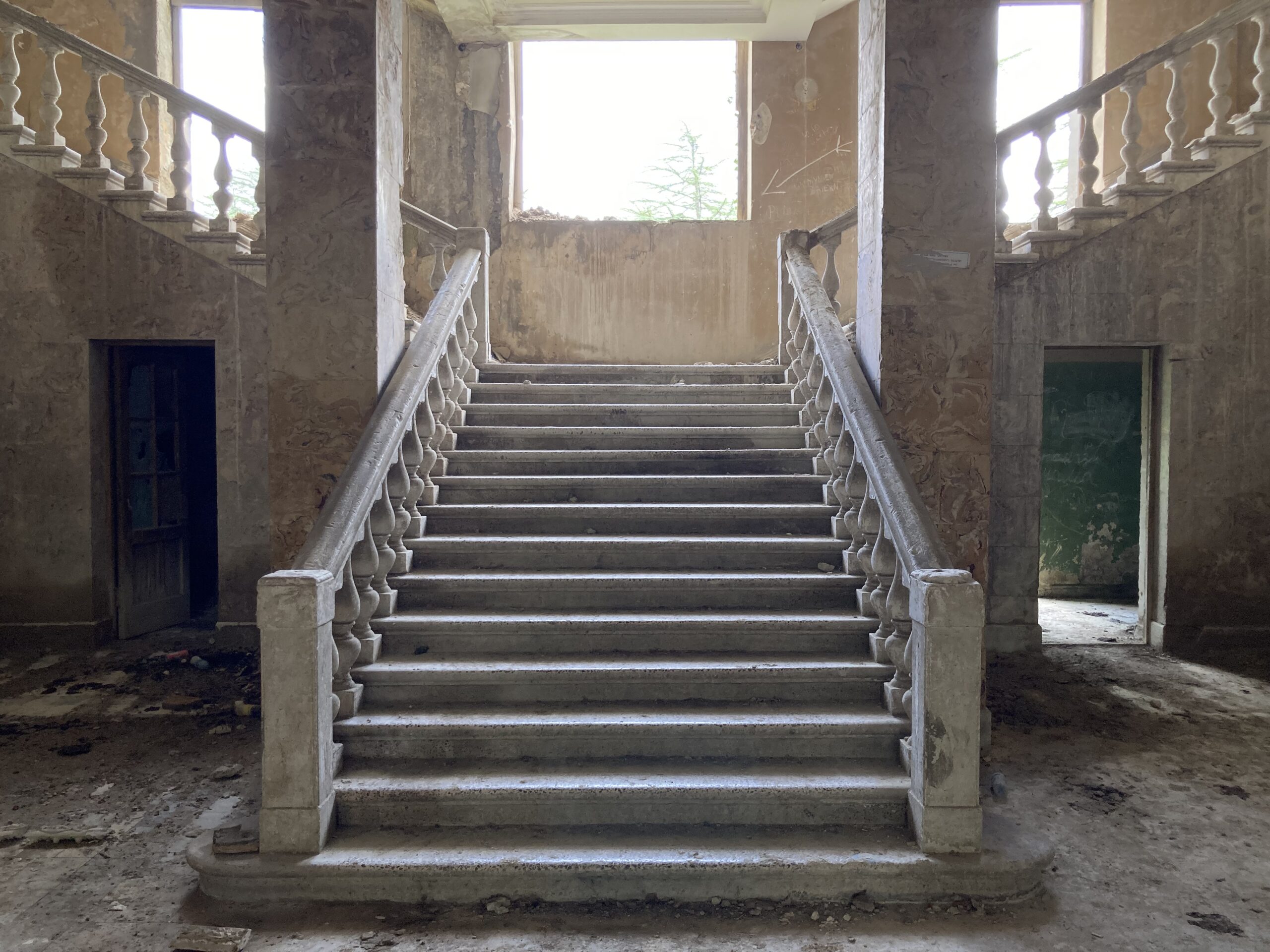
Though Sanatorium Imereti offered a lot to see and wonder about for us, at this point we were getting pretty tired, and certainly hungry. Also, I felt like my mother had her fill of sanatoriums to see for a lifetime as she was slowly becoming a bit too grumpy for her age. Feeling quite content with our exploration so far, we went back to the central park to find a place for lunch.

That place turned out to be Magnolia, a surprisingly decent establishment that specializes in Italian cuisine. Apparently, there used to be a restaurant here (with the same name) back when these hotels were full of Soviet holidaymakers, but of course this one is not a direct continuation of that establishment. Nevertheless, as you sit in its relatively recently renovated yard, you cannot help but get to feel a bit of that “old world blues.” It also felt quite lonely, until we realized that the adjoining hotel was rented by an Armenian football team which had an upcoming match with a local Georgian team. This was quite an interesting occurrence to say the least. We did run across a couple exploring the ruins a few hours ago, and we came across a Mercedes Vito full of what appeared to be American university students. These seemed to be on a tour of “Soviet Georgia,” as the professor looking feller did start lecturing a bit as we slowly left Sanatorium Medea. Nevertheless, for the most part, there were not any visitors to this part of the town, and as such it was always interesting to run into anyone, let alone an entire football team.
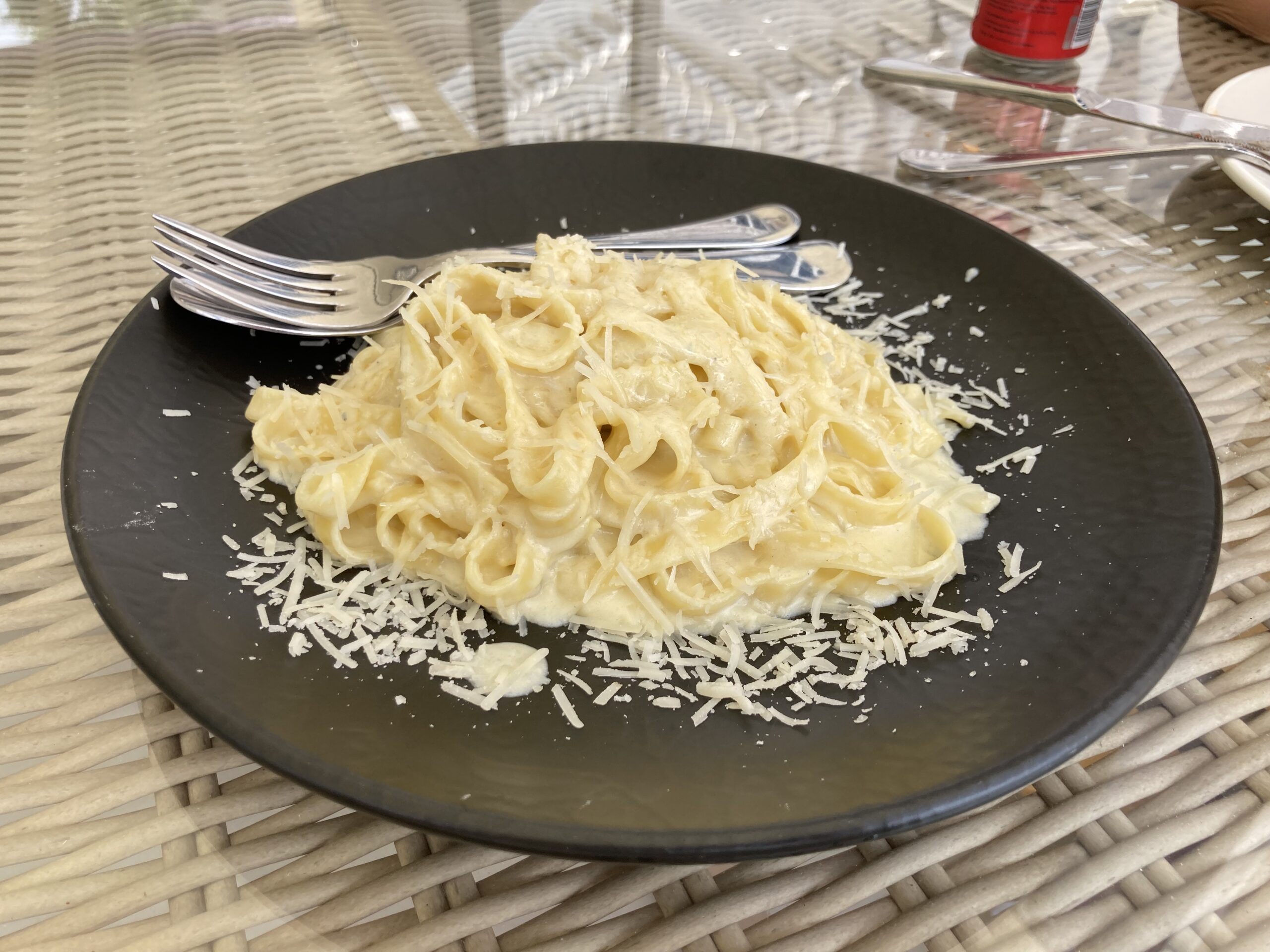
Though Magnolia’s pizza was just to my liking, full of tangy and rich tomato sauce and some sort of tasty Georgian cheese, as well as an array of vegetables that all somehow kept their juices, I cannot praise their pasta all that much. It was not bad at all, it was full of cheese as is expected from a so-called four-cheese tagliatelle, but it was a bit too heavy for a hot summertime lunch. So one can say that I may have made the wrong choice. In any case, I was glad to have shared it all with my mother. Furthermore, I was amazed once again by seeing just how easy it was to keep to a mostly vegetarian yet ultimately a pescatarian diet in Georgia, even if one is far away from any bustling city centers. This certainly a privilege that I wish I had during my later travels in Central Asia…
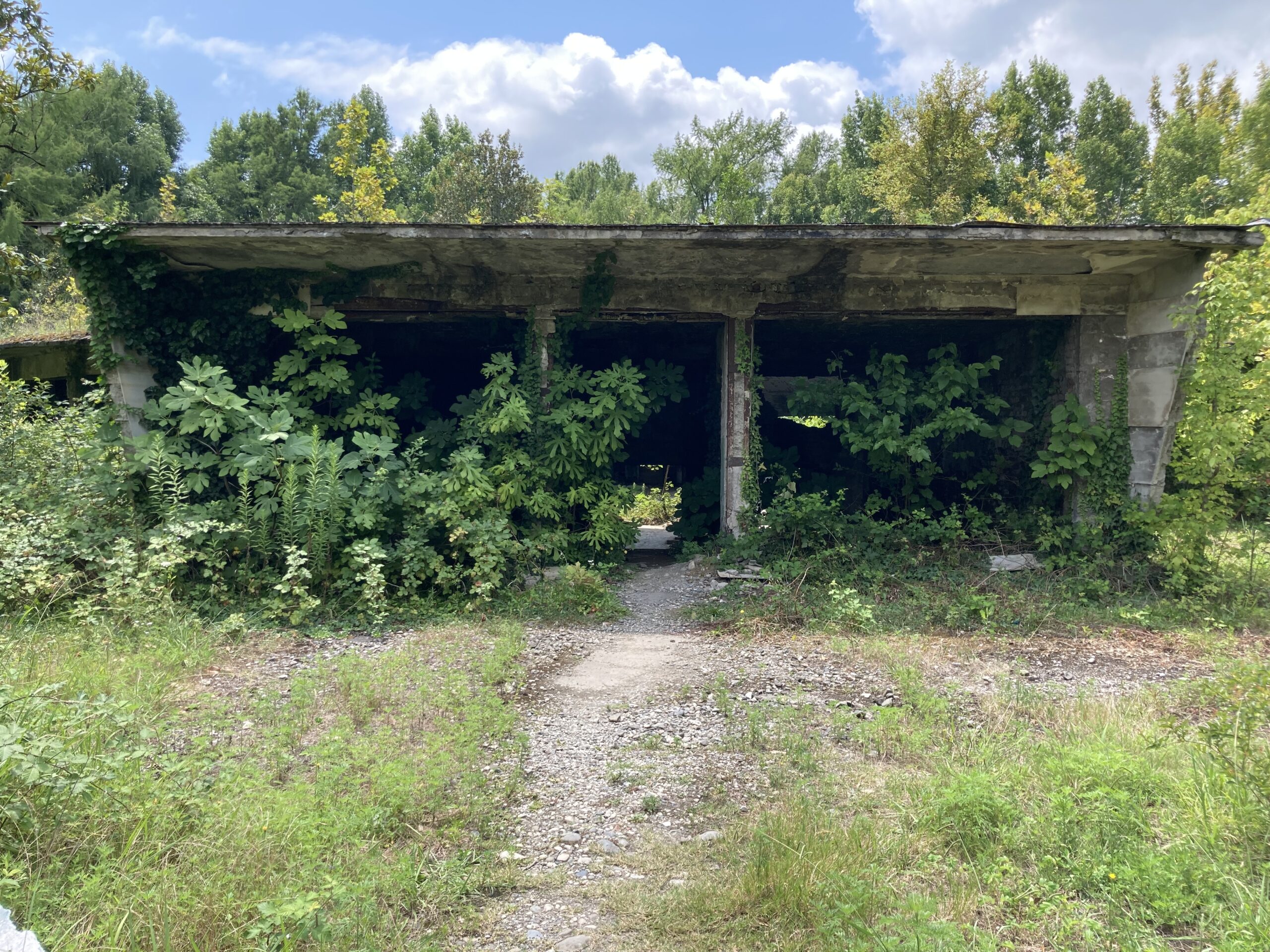
After feeling energized and a bit rested thanks to our lunch at Magnolia, we decided to explore what the central park itself holds before going back home. Well, in short, there are many public baths here, most of which are in ruins now, certainly keeping up with the theme that are set by the sanatoriums that surround the park.
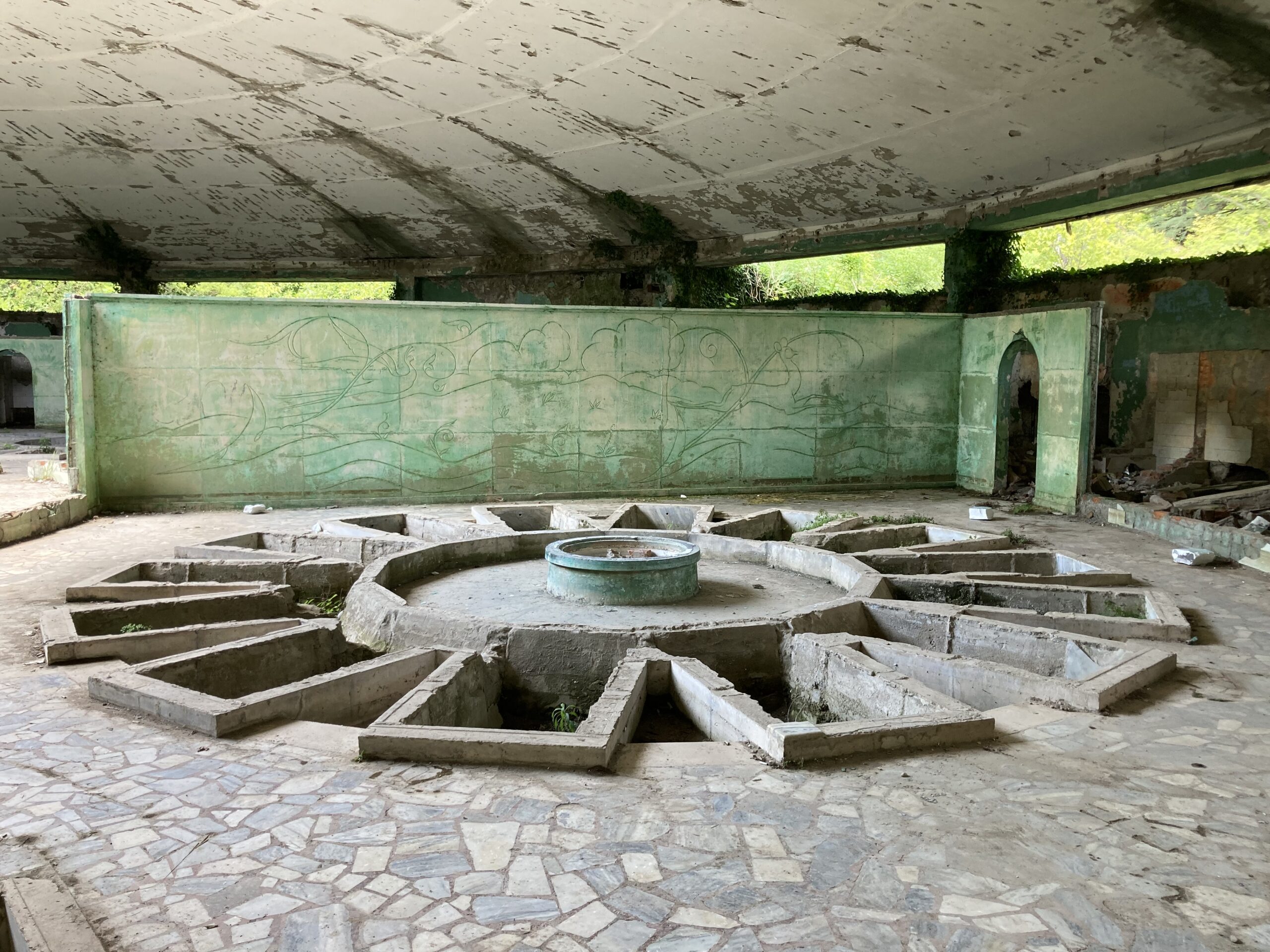
The bathhouse numbered 8 is the most popular of these places with urbex crew, as it kept most of its charm intact on the inside. You can see where the water used to be pumped from, and where the drains once were. Walls had some sort of decorations on them, but I could not figure out what was depicted on them.
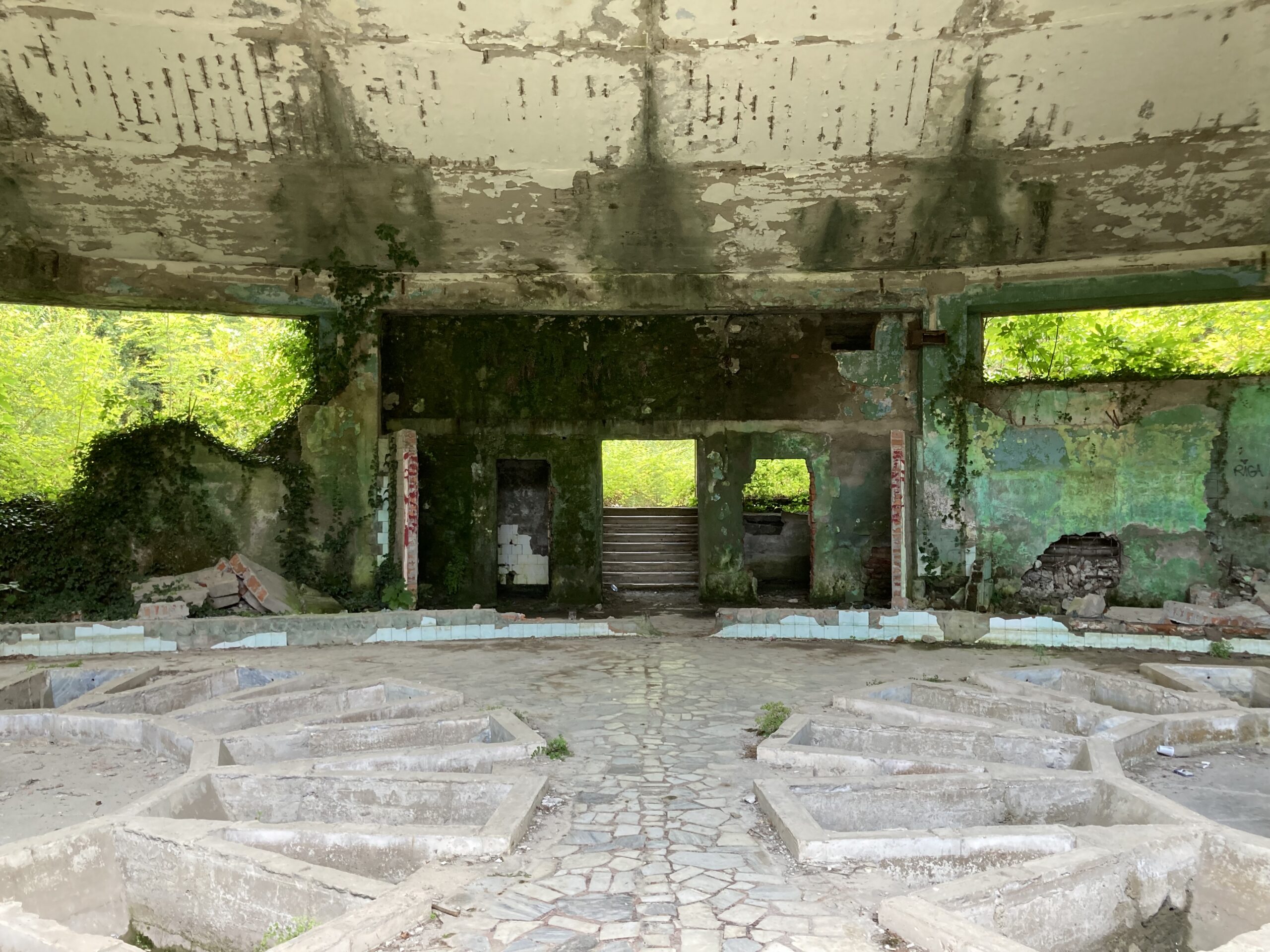
It is such a shame to see these structures in this shape, but ironically, it is this abandonment that puts Tskaltubo on many of its (few) visitors maps. It is just, different. It is not “just” any other resort town, for now, it is hardly a town to begin with. It is a collection of buildings that are now defunct, and are slowly rotting, as well as a few construction yards that are readying the city for the next phase of its life.
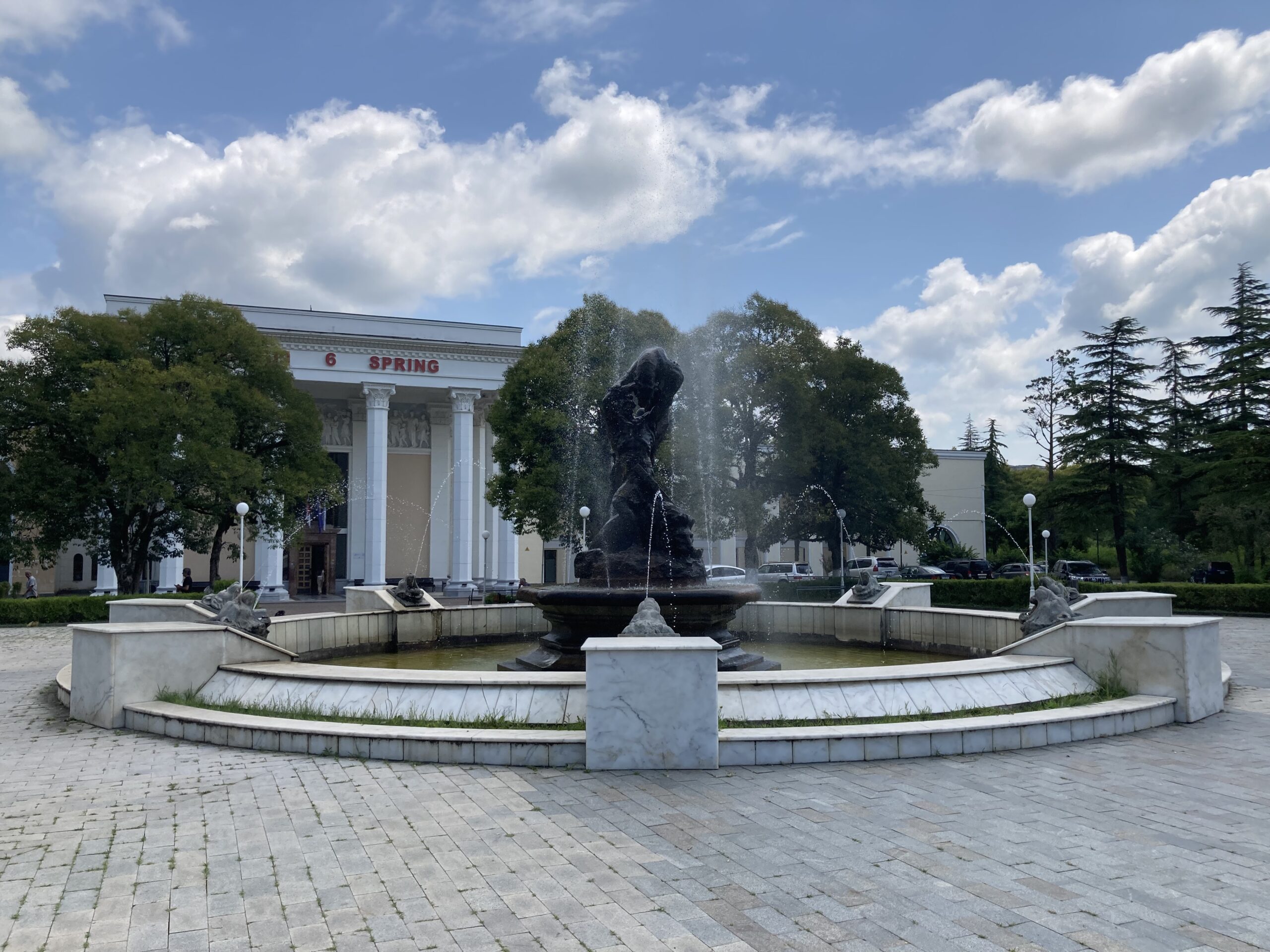
Thankfully, not all are in ruins in Tskaltubo since some parts of the town have already been restored to their former glory. The bathhouse numbered 6 is a good example of that. It was full to the brim with locals and foreigners alike waiting their turn to enjoy its warm waters, or to see a doctor. This was certainly a different sight than what I was used to in Tskaltubo so far. I knew the city was not completely abandoned, and yet most of it certainly felt that way up until now. Incidentally, one can find a special room reserved for Stalin within this bathhouse, however, when I asked if I could see it, I could only receive a single word as an answer: “Net!” I asked again, politely, to another official, who too repeated the same answer. I once read of a traveler who bribed his way into seeing this rather unique room, but neither my Russian skills at that time would allow me to do it without making a fool out of myself, nor could I rationalize bribery in my mind, regardless of how harmless it may seem in this instance. Given the fact that this is a public bathhouse, it is open to all. I do not think that there are any legal reasons for us not to see the said room, and if everyone bribes their way into it, no one will be able to see it freely as they probably should.
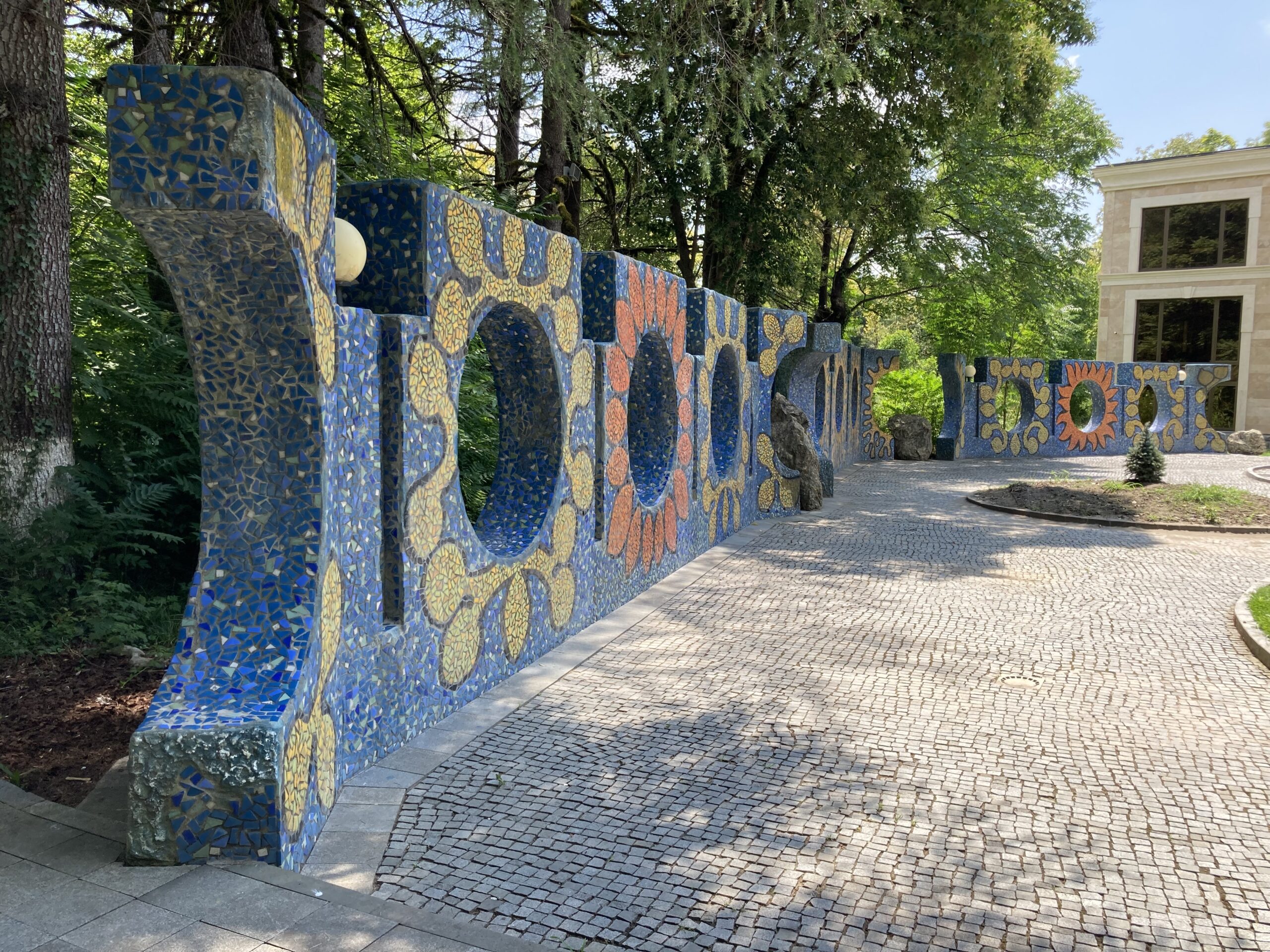
Well, what else is there to say? The few hours we spent wandering around Tskaltubo may not have changed me as a person, but it certainly made me realize that the best travel experiences I have been having so far (like my impromptu “pilgrimage” to the tomb of Sari Salltik in Albania) all took place in either abandoned or hardly inhabited parts of countries I was lucky enough to visit. I also realized once more that the theme of “change” is of a great interest to me. Abandoned places, like Tskaltubo, like that Soviet installation on Sazan Island in Albania, and so on, are especially interesting spots for me as a result of that interest of mine, they are “change” incarnate.
To witness with my own eyes just how ruined a bustling town can become in a bit over three decades is both horrifying and fascinating. After all, if even a famous resort town full of state-of-the-art hotels and sanatoriums can be overtaken by nature in three decades if it is left to its fate, it sure seems more and more like a miracle that ancient wonders like Egyptian pyramids made it to our day in a form that resembles their original version.
A sliver of ancient Egypt is still with us, thousands of years later, however partial it may be. On the other hand, a radically different, interesting, and even recent time period like the one when the Soviet Union existed as a very real state seems to have faded not only from the memories of younger generations (since some of us were not even around back then), but also in its most physical form since (some of) its ruins are decaying much faster than the Egyptian pyramids in just three decades.
In any case, though sometimes it is hard to stop my overtly romantic approach to certain historical matters (ones that are of little relevance to my actual academic works), I have to admit that the climate of partially subtropical Georgia is to blame for the most part for the quick overtaking of Tskaltubo by the surrounding lush greenery. Although the desert winds did make dents in Egyptian pyramids and eroded their shiny outlook in time, a lack of vegetation in that part of the world meant that the only thing that could potentially reclaim these ancient wonders was the desert itself, and thankfully it was kept at bay by successive states that ruled these lands.
Last but not least, there are some news, interviews, and videos online which suggest that due to the poor state refugees of the Russo-Georgian War arrived to Tskaltubo in 2008, they sometimes had to make a living out of selling anything valuable that they could scavenge in the former spa town. They also had to survive many cold winters, which sometimes involved burning the doors, furniture, and even artworks that allegedly remained in place up until that point. It is not my place to pass judgment on anyone as I can hardly imagine the reality of life as a refugee, one can only hope that the livelihood of the remaining ones could eventually be improved somehow, and also acknowledge that Tskaltubo certainly had it very rough compared to some other places that were abandoned to their fate.
Feeling extremely blessed one second and rather melancholic in the next, and thinking that I was likely one of the few last lucky visitors to see some of Tskaltubo in its former glory, we eventually got onto a minibus and slowly made our way back to Kutaisi, still deep in thought.
